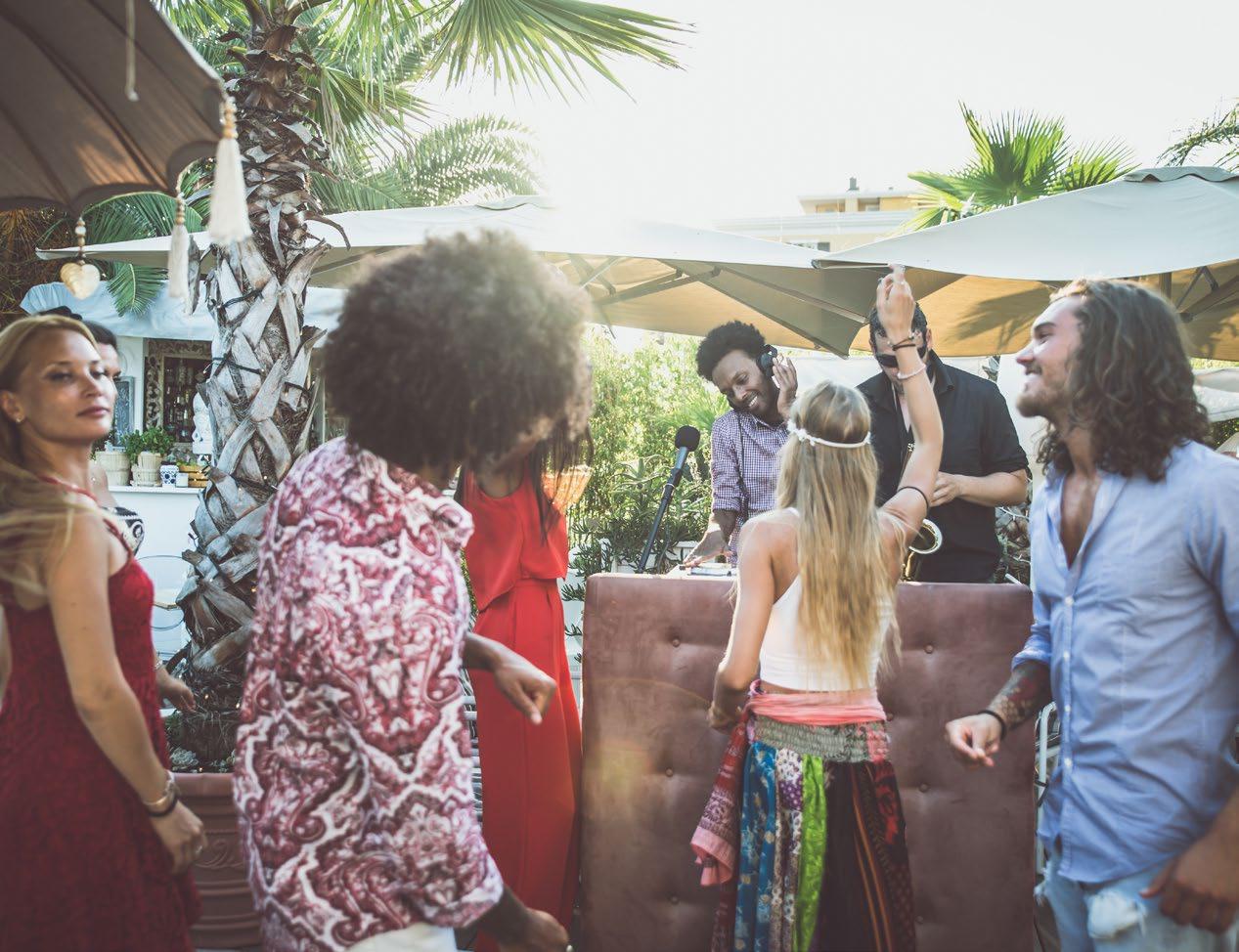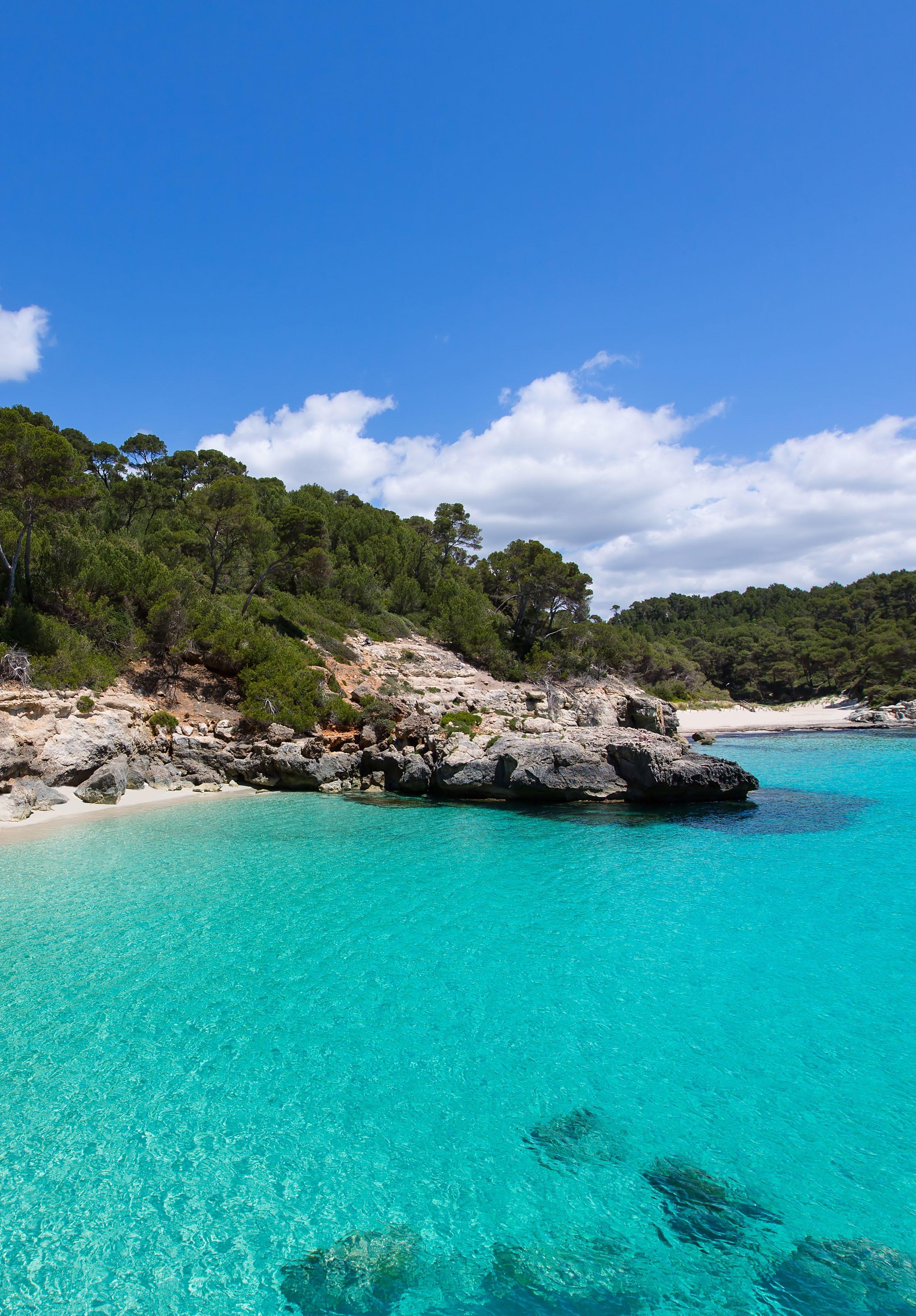
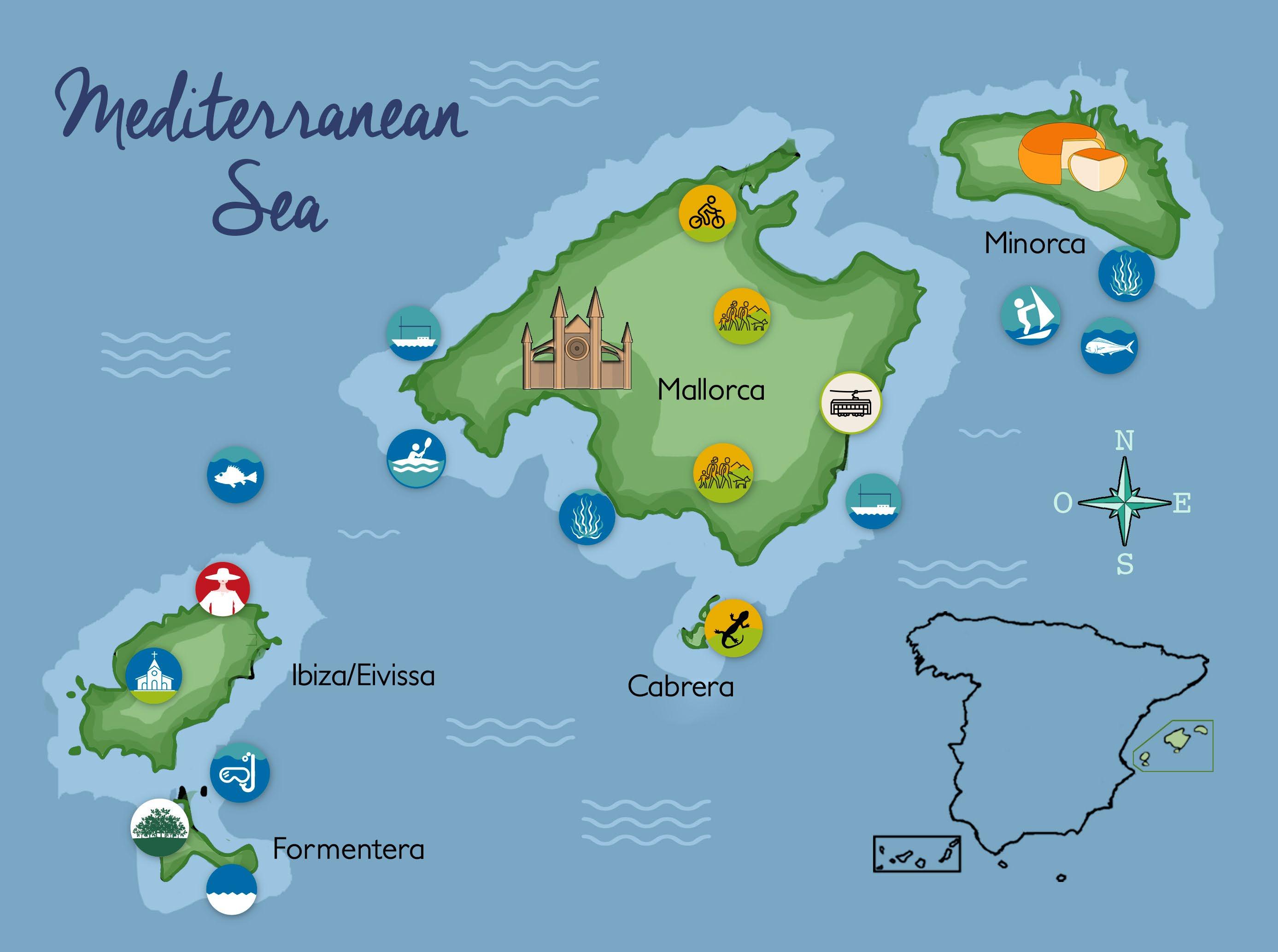
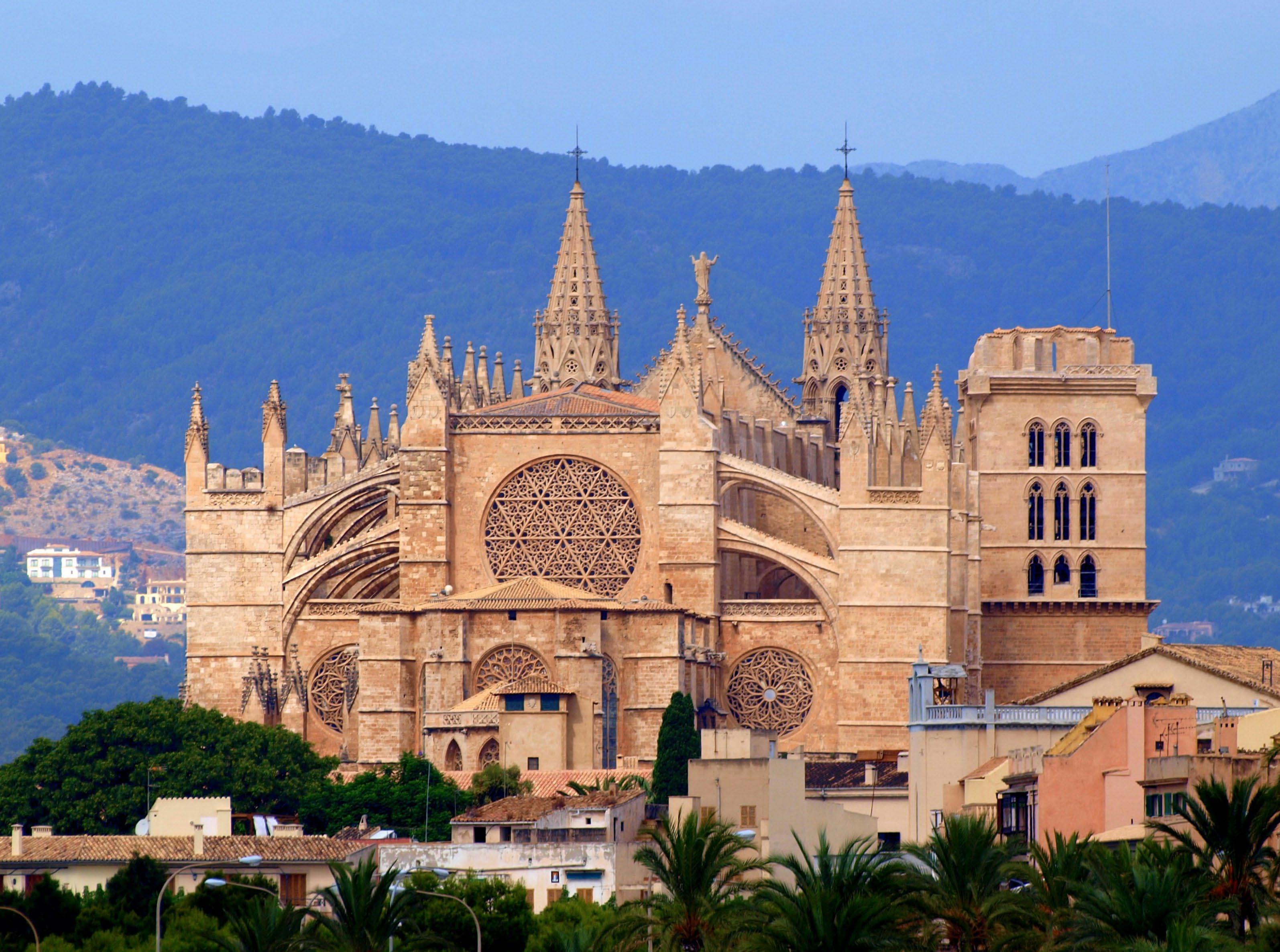
INTRODUCTION
Discover the special beauty of each of the Balearic Islands: Mallorca, Menorca, Ibiza and Formentera. The climate, with more than 300 sunny days per year, and the beautiful countryside mean there are endless possibilities for enjoying outdoor activities like water sports, horse riding, boat trips and ballooning.
The clear, warm waters of the Mediterranean are ideal for taking a refreshing dip on its fantastic beaches. The choice is endless, from familyfriendly beaches with a full range of services, to hidden coves in idyllic surroundings where you can enjoy amazing sunsets.
Visit towns and villages steeped in the culture and history of the Balearic Islands, with museums, modernist palaces, Gothic churches and medieval castles. There are even pre-historic remains like the Bronze Age megaliths called “talayots”.
Entertainment is guaranteed, with concerts, festivals, clubs and so much more. You'll never have a problem finding something to do. Take part in a traditional festival, have a drink on a terrace overlooking the sea and dance till dawn in a beach club.
Come with us as we take a look at the main attractions and you'll be amazed by the beauty and magic of these islands. 3
MALLORCA
Nature, sports, beaches, charming villages, underground caves, a great range of leisure possibilities for families... Mallorca has so much to offer. So what are you waiting for?
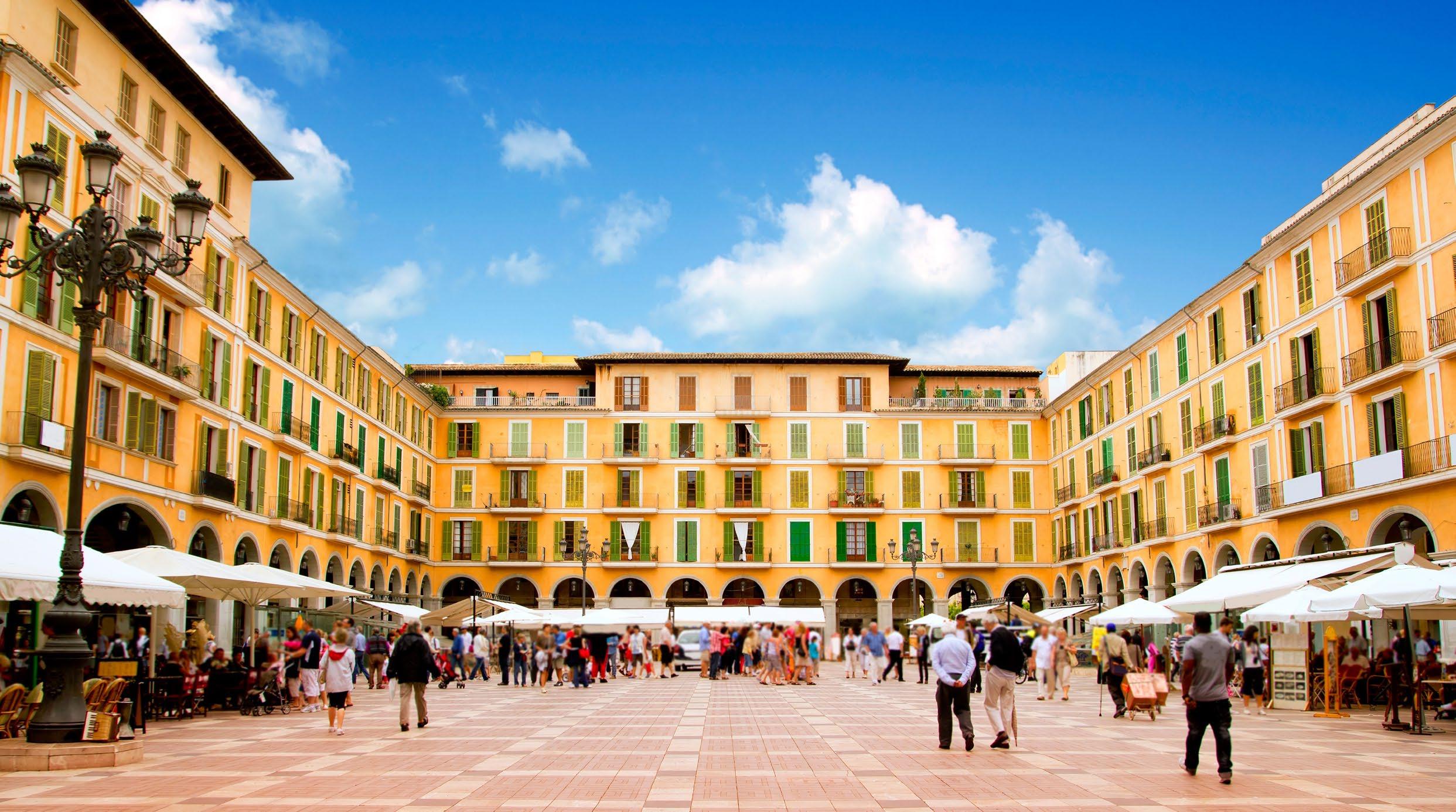
CULTURE
The beautiful historical old town of Palma, the capital of the Island of Mallorca, is amazing. Overlooking the Roman wall which used to surround the city, the Gothic cathedral called La Seu rises majestically over the sea. It was restored by Antonio Gaudí and contains a spectacular mural created by Miquel Barceló. Nearby stands the Almudaina, another beautiful Gothic monument.
Its function is that of a Royal Palace, and it is one of the Spanish royal family's residences. You can see both buildings reflected in the waters of the artificial lake in the Parque del Mar before the tour continues towards La Lonja, which used to be the headquarters of the Guild of Merchants. It is one of the most beautiful buildings and is used as a venue for temporary exhibitions of art, photography, etc.
There are even more treasures in the narrow streets and alleyways in the town centre. The March Palace Museum has an interesting collection of contemporary sculptures and ancient books. Then, on to the Convent of San Francisco, which features a basilica and a Gothic cloister with slender columns.
The Church of Santa Eulalia has a surprisingly high bell tower and several gargoyles overlooking the terraces around the temple.
You can see some of the lesser-known pictorial works of Miró, one of the major figures in Surrealism, in the Pilar y Joan Miró Foundation
For an unbeatable view of the island, you should go up to the Gothic-style Bellver Castle, about three kilometres from the historical town centre and one of very few round castles in Europe.
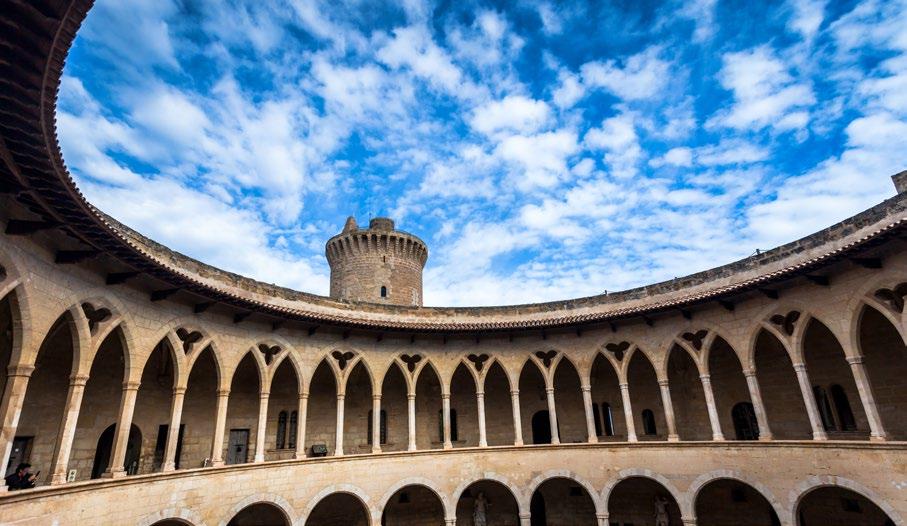
Head to the northern mountain range of the island to visit the Miramar Monastery and the monumental ensemble of the Carthusian Monastery of Valldemossa, in the town of the same name.
Travel back to prehistory at the Son Fornés museum, located in an old 18thcentury mill in Montuïri, and discover what life was like in a Talayotic village
In the district of Artà you'll find one of the largest and best preserved: Ses Païsses, located in a pretty oak forest. And in Llucmajor, the prehistoric village of Capocorb Vell.
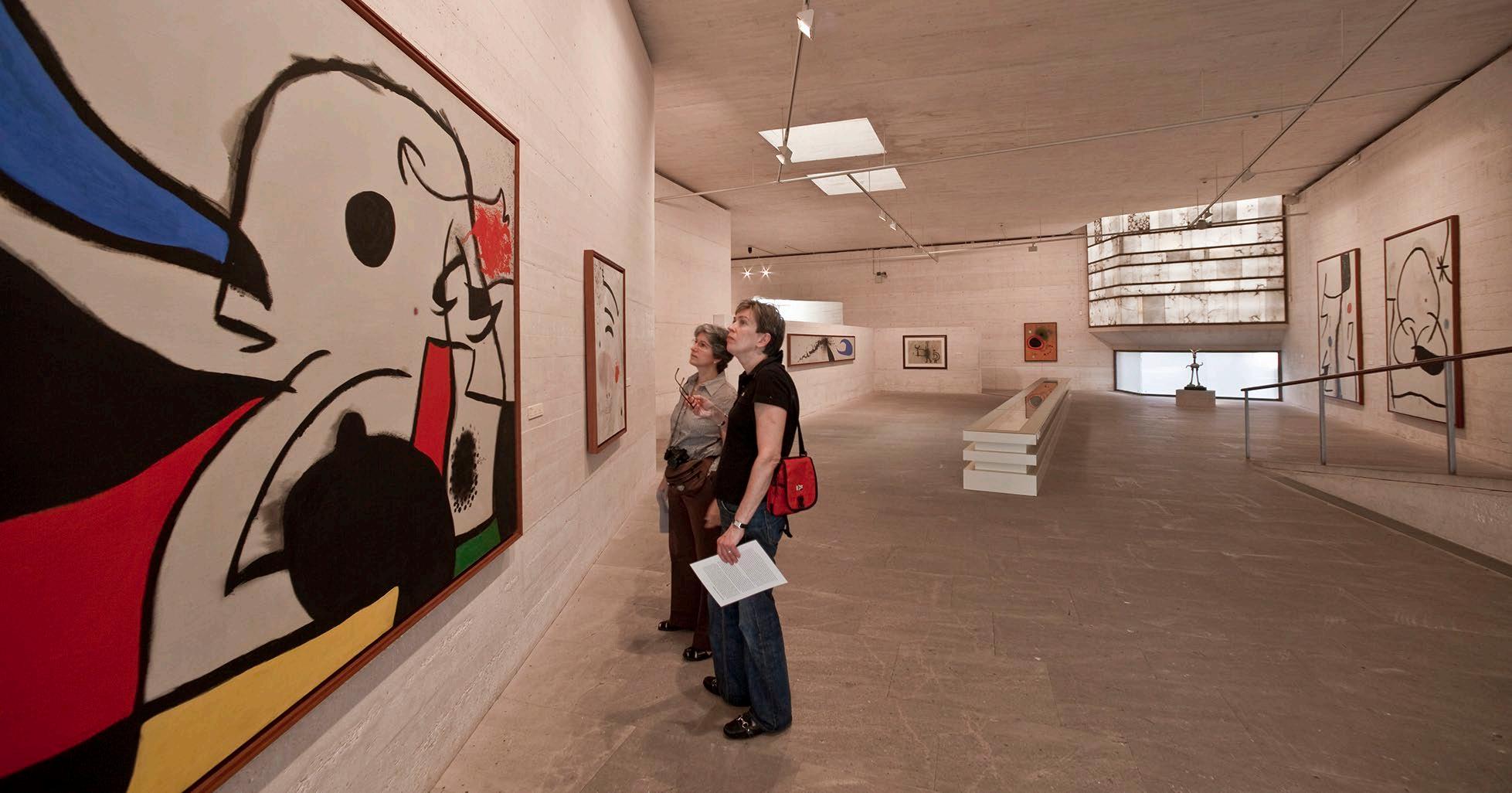
SHOPPING IN MALLORCA
You'll just love the shopping streets in Palma like the Calle Sant Miquel, Jaume III and El Born. If you are looking for craftwork, browse the stalls in the Plaça Major in the morning and visit some of the century-old shops in the area, such as basket shops, chocolate shops, fabric shops, bakeries, pastry shops and cafes.
Every day of the week, there are lively open-air markets in many towns such as Alcudia, Artá, Calviá, Manacor, Pollensa, Sineu and more.
You might like to purchase some of Mallorca's most highly-prized traditional products like fabrics, gold and silver creations, basketwork and pottery. An excellent souvenir could be a siurell, which is a small, white clay figure with a whistle whose origins date back to the Talaiotic Period.
The unique pieces obtained using the blown glass technique, which originated with the Phoenicians and has been declared Intangible Cultural Heritage by UNESCO, will fascinate you with their colour and beauty: wineglasses, lamps, bottles, chandeliers...
Special mention should go to leather goods, like footwear, which are renowned worldwide for their quality. If you're interested in discovering the craft process involved in their production, you're best bet is to visit a factory in one of the towns where they are made, like Inca in the Raiguer Region in the centre of the island.
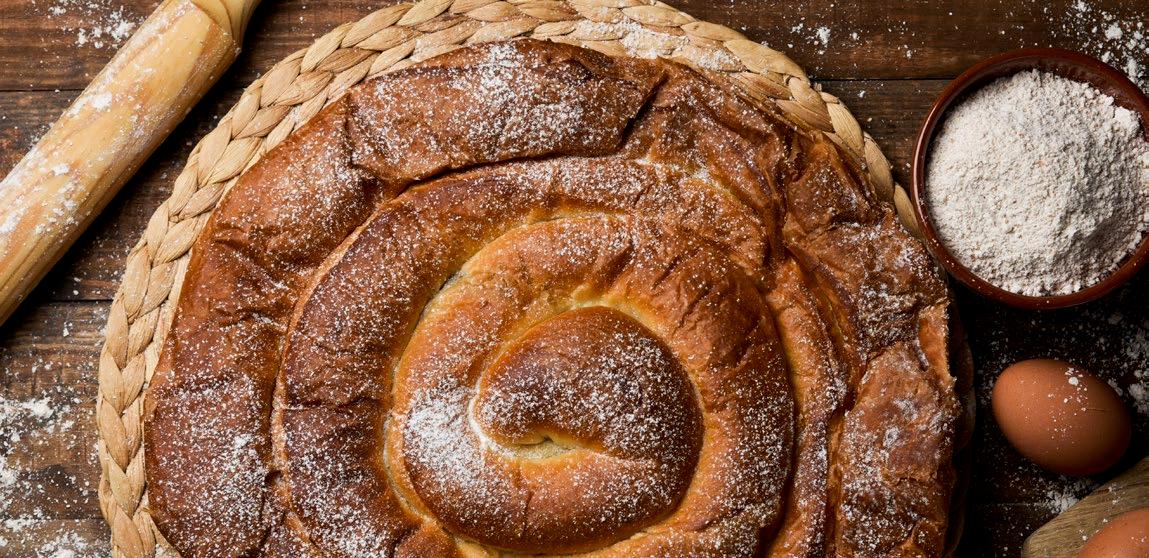
TASTING MALLORCA
Taste the flavours and the variety of Mediterranean cuisine prepared with local products from the island: fish and seafood, locally produced meat and fruit and vegetables from the gardens.
Try the typical cold-meat products made from pork, like the renowned sobrasada sausage. And you'll love some of the traditional dishes like “coca de trempó”, a flat pastry with several vegetables, or “arròs brut”, spicy rice in broth, originally made with vegetables, meat and game.
For dessert you have the famous “ensaimada”, a pastry cake in the form of a spiral and sprinkled with icing sugar. Mallorca is also famous for its honey. You can taste it in sponge cakes, marzipan and exquisite cheese cake. Almonds also play a leading role in local culinary tradition: you'll find them in ice creams and nougats.
In the Santa Catalina Market, the oldest in Palma, there is a blend of traditional and gourmet stalls. Take advantage of aperitif time to taste another exquisite product, olives with Protected Designation of Origin. And the olive oil of Mallorca, from centuries-old olive trees in the Serra de la Tramuntana, is another of the gastronomic treasures. The wines from its two designations of origin, Binissalem and Pla i LLevant, will make an ideal pairing.
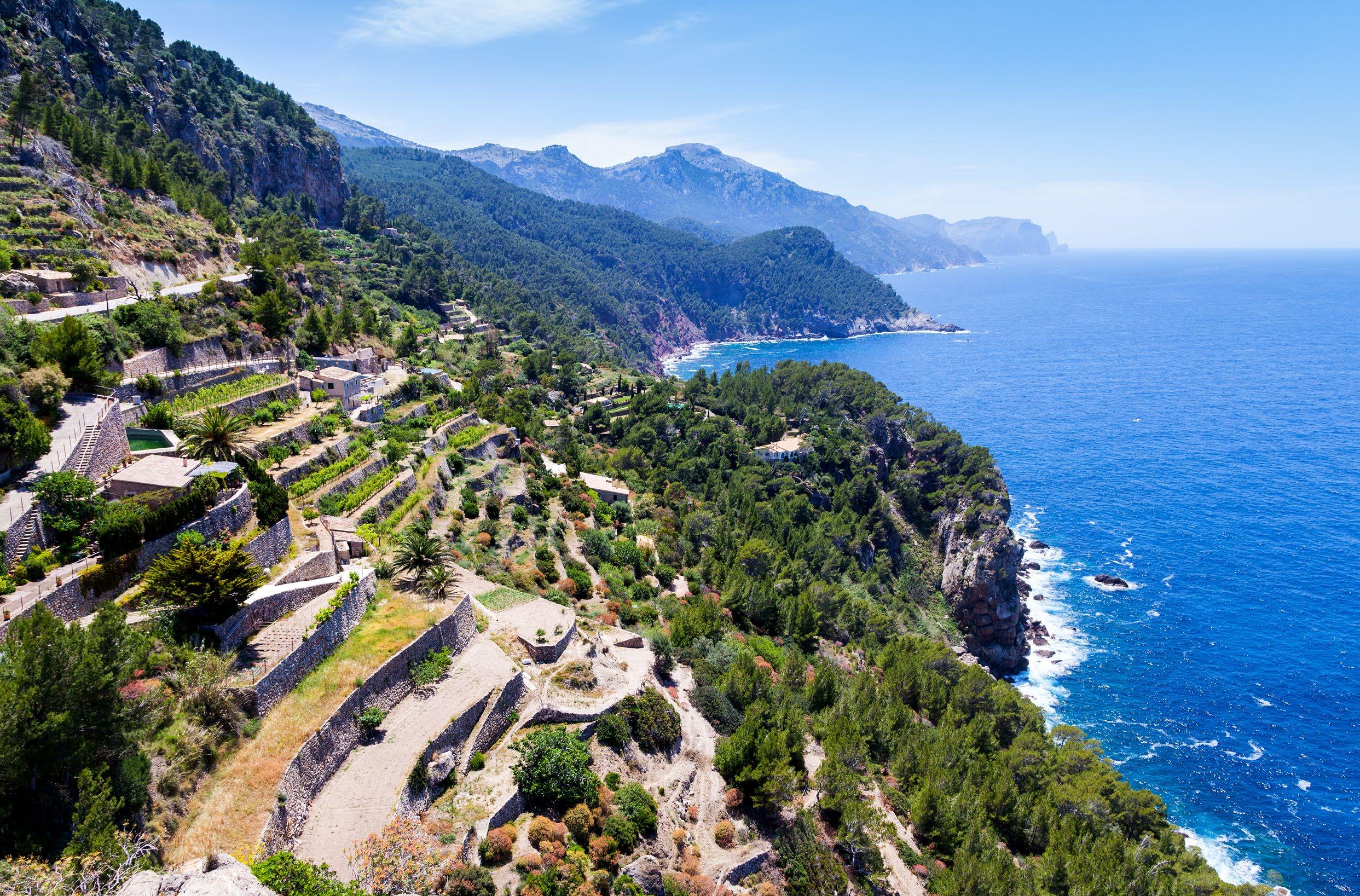
NATURE
In Mallorca, there is beauty everywhere you look. Marvel at the Tramuntana mountain range, the largest protected natural area in the Balearic Islands, declared a World Heritage Site by UNESCO. The easiest way to explore it is by taking the hundred-year-old railway from Palma to Sóller where it connects with a wooden tramcar. If you prefer hiking then take the Dry Stone Route. In the far north you'll get captivating views from the lookout points and coves of Cape Formentor, just a few kilometres from Port de Pollença. One of the most attractive excursions you can make during your stay in Mallorca is to the natural monument of Torrent
de Pareis, a spectacular cliff location. It is an impressive three-kilometre canyon which leads to the lovely Sa Calobra Beach. It can be reached on foot or by taking a boat from Port de Sóller
In the town of Campanet, you'll find an extraordinary, spectacular natural phenomenon: the Ses Fonts Ufanes natural monument, a well which springs naturally from the ground and makes its way amongst the trees and the rocks.
The Mondragó Nature Reserve in Santanyí has abundant Mallorcan flora and fauna. Follow one of the four recommended routes on foot or by bicycle to experience ecotourism at its
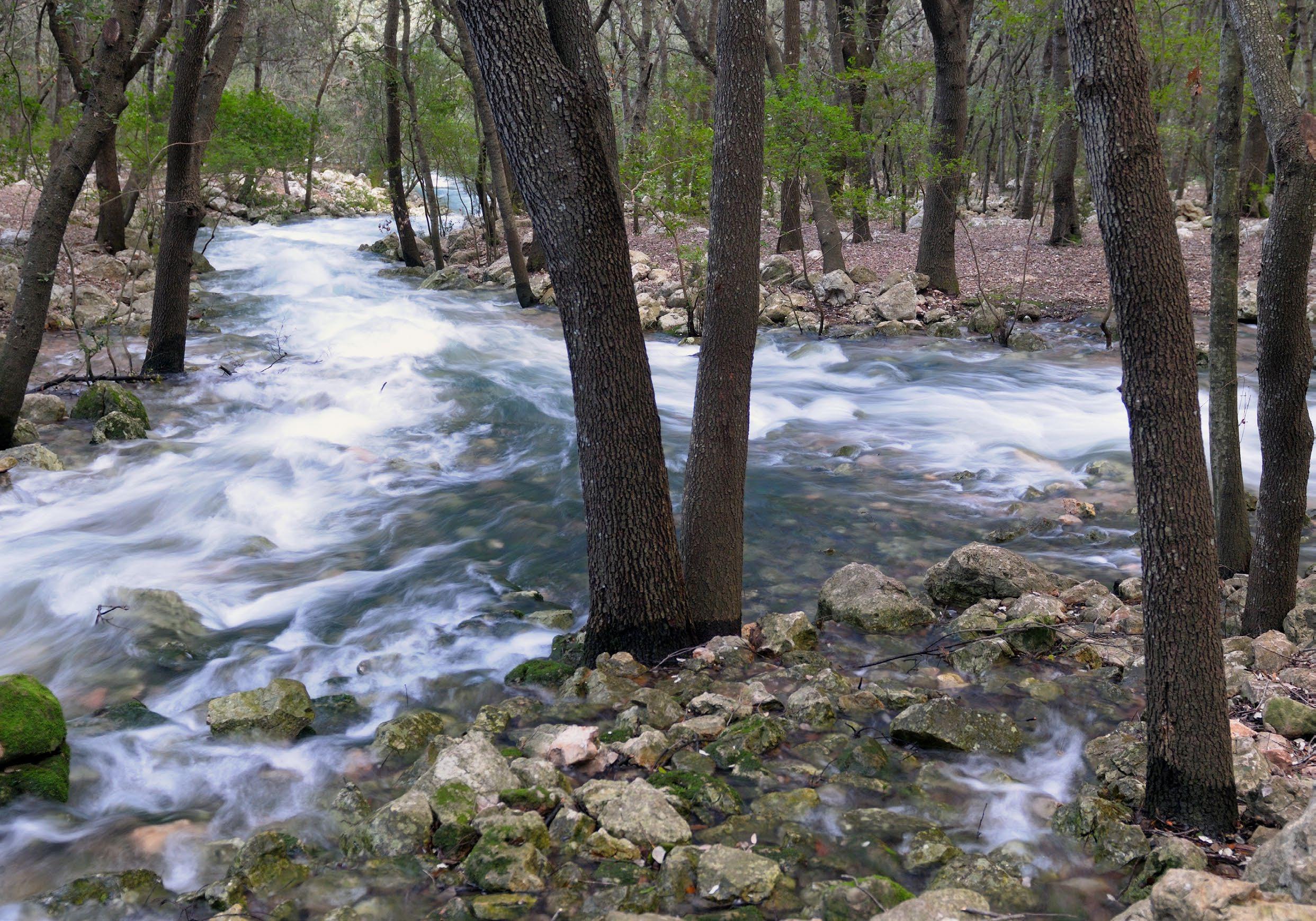
finest. Plus, you are in one of the best places for bird watching on the island, as more than 70 species coexist – from eagles and falcons to flamingos, birds of prey and migratory birds.
Even under the ground – can you imagine listening to a classical music concert in an underground cave with more than 5,000 years of history? In the district of Porto Cristo, you can experience this in two venues. In the Drach Caves, where Lake Martel awaits you, which you can cross by boat. And in the Cuevas dels Hams, the Plains of Fra Mauro, the Devil's Pi and the Sea of Venecia, an underground lake.
In the Artá Caves, located in the Capdepera cliffs, you seem almost able to make out Gothic constructions and monsters in the vast caverns. The Campanet Caves will captivate you with their spacious terraces with views of the Tramontana mountain range. In Palma, you'll find the colourful Génova caves 36 metres underground irrigated by fresh water.
If you like diving, then this is a paradise. Mallorca has a number of Marine Reserves around the coast, like those of the Bay of Palma, Llevant and Migjorn de Mallorca. Dive into Sa Dragonera to appreciate the incalculable value of Posidonia oceanica in the marine biodiversity of the Balearic Islands.
COAST AND BEACHES
The beauty of Mallorca's beaches and coves goes beyond summer. The fact that many of them are located in protected natural areas allows for incredible cycling and hiking routes. You will be able to explore coastal landscapes of dunes and cliffs, with diverse vegetation and lots of fauna.
In the Bay of Palma, you have several choices of city beaches with all the commodities, like S'Arenal, with its long, palm tree-lined seafront promenade. The Oratori de Portals (or Cala Portals Nous) is one of the most popular and easy to access.
Take a long walk feeling the sand under your feet on one of the largest beaches in the Balearic Islands, the Playa de Alcúdia. Or you could spend the day in the sunshine by the sea in Es Port, a popular sandy beach right next to the

Colònia de Sant Jordi, in the municipal district of Ses Salines in the south east.
If you'd rather be away from the town centres, then you should try Portals Vells, in the Calviá district, in a cove surrounded by pine trees and with crystal-clear waters.
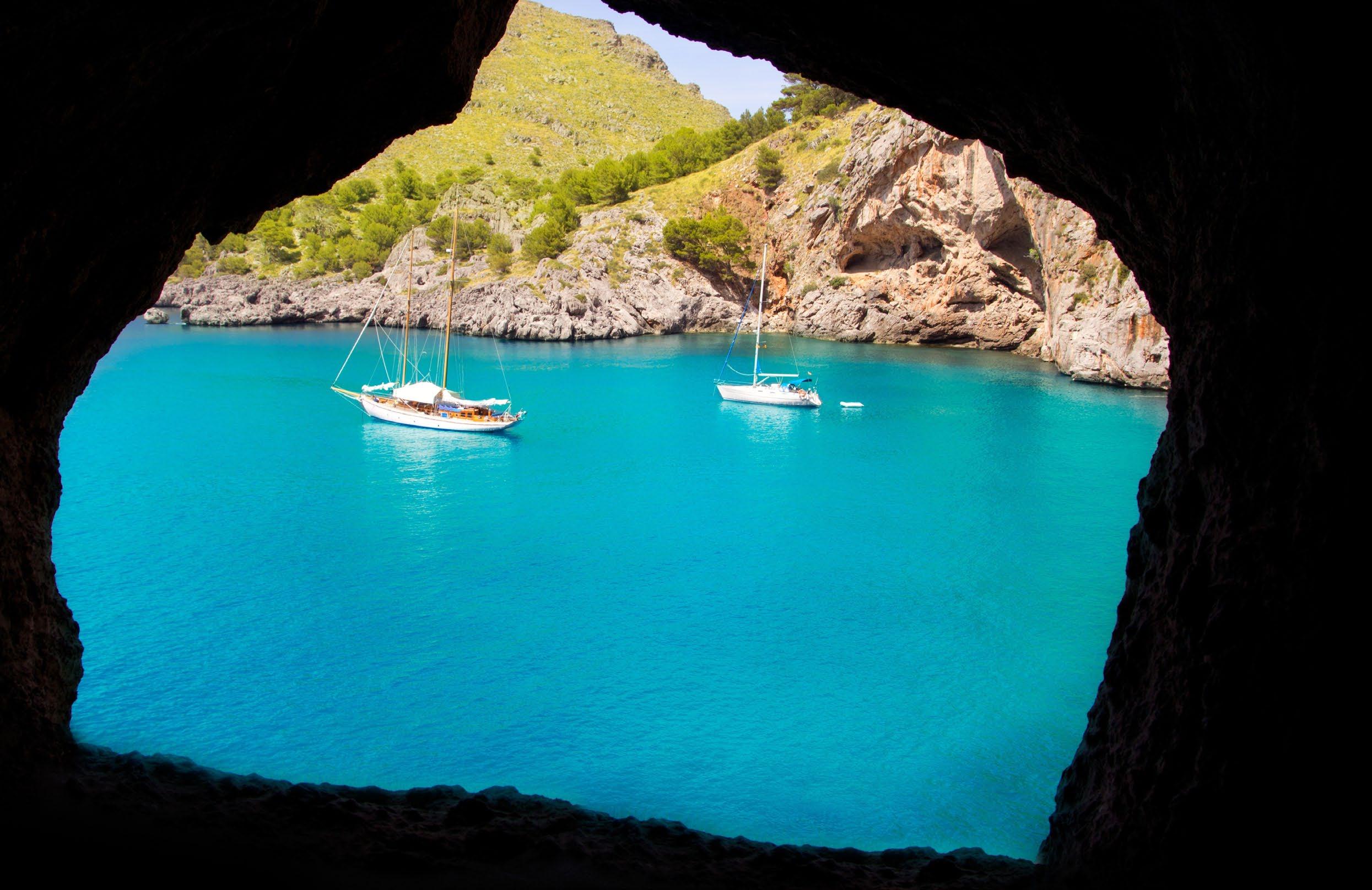
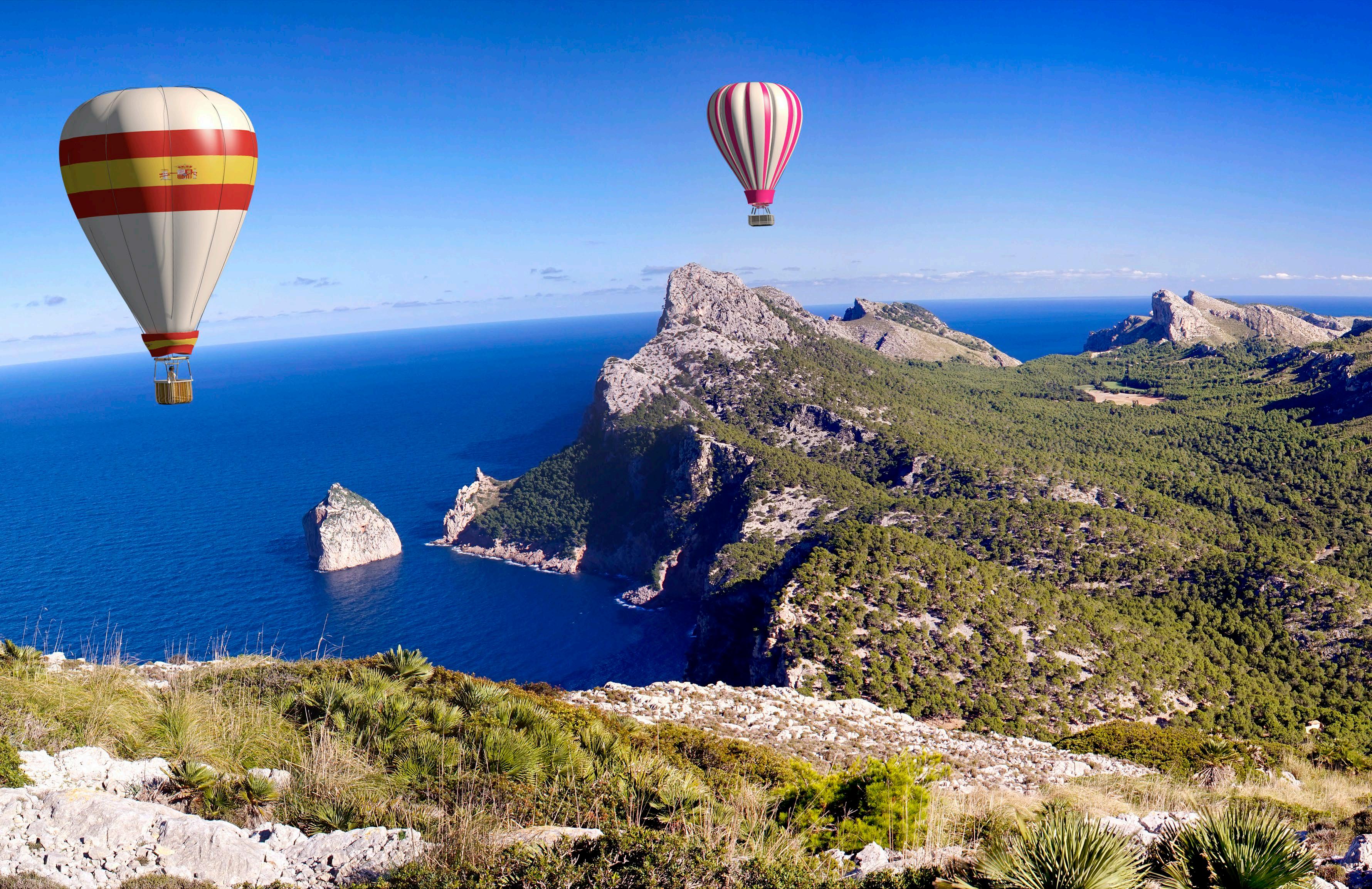
MALLORCA WITH CHILDREN
Get a bird's-eye view of the amazing countryside: take your family up in a hot-air balloon. There are several options to choose from.
Have a day of fun in one of the water parks of Llucmajor, Alcudia or Magaluf, or in the adventure parks in Calvià, Palma de Mallorca or Santa Ponça.
The island has several aquariums and zoos and numerous equestrian centres that host activities and horse riding excursions.
In addition to cultural visits to archaeological sites and castles in Mallorca, there are attractive hiking routes for children to discover unique places such as the S'Albufera nature reserve.
If you like speed, Marratxí and Can Picafort are home to three of the five karting circuits on the island.
L More information: www.mallorca.es/
GETAWAY TO THE UNSPOILED ISLAND OF CABRERA
Ten kilometres south of Mallorca is the Cabrera Archipelago, a MaritimeTerrestrial National Park made up of 19 small islands and islets. A jewel of Mediterranean biodiversity with more than 400 botanical species, 200 types of fish, molluscs, crustaceans, reptiles, seabirds and birds of prey.
You can reach Cabrera, the largest island, by boat from the Colònia de Sant Jordi. Since there is only one 12-person shelter that is in high demand, visitors usually just do a day trip. There is a visitor centre and an ethnographic museum with Roman amphorae, ceramics and other ancient remains. Its 14th-century castle served to defend the island from pirates and corsairs. If you follow the
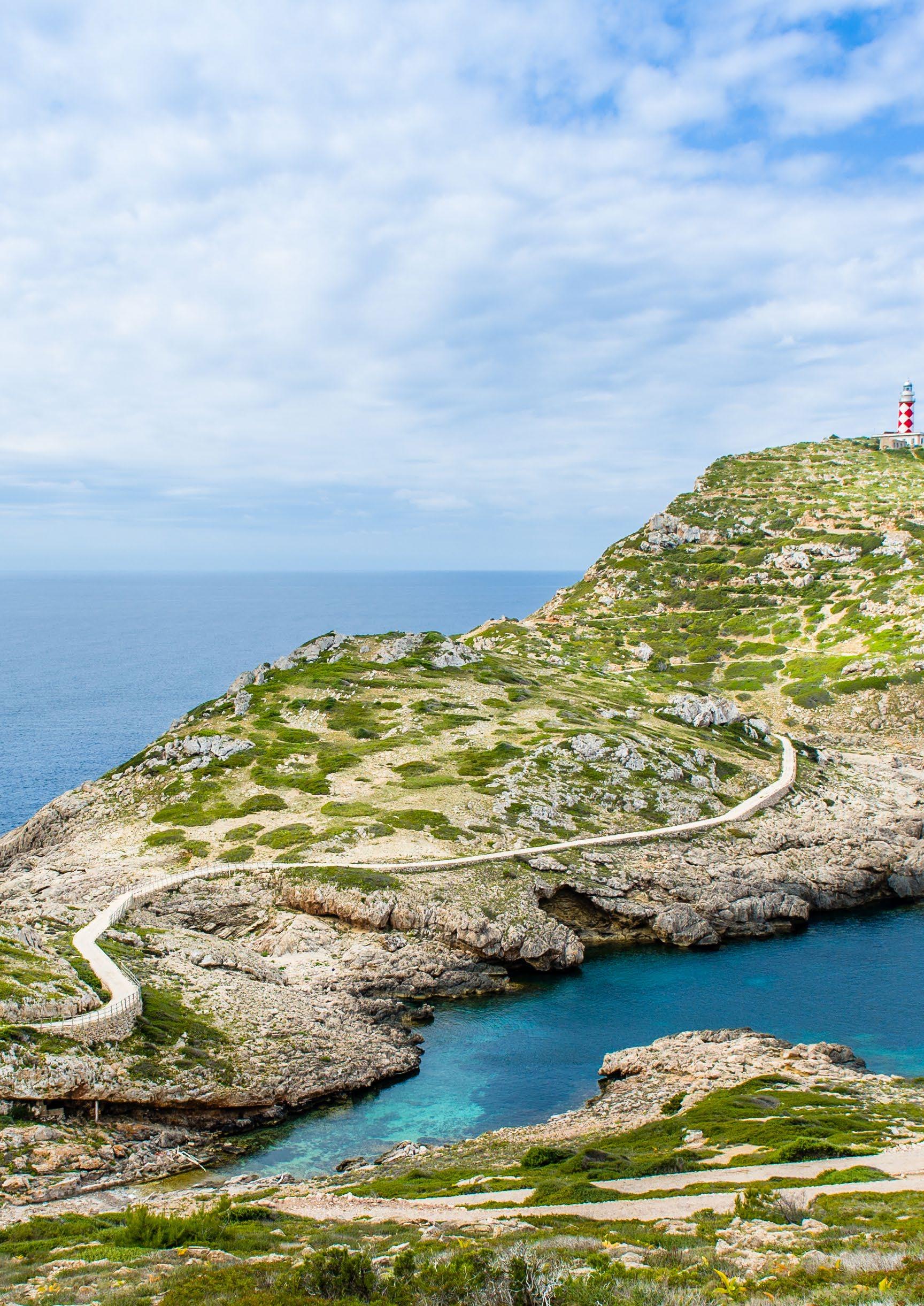
hiking trail to the Nénsiola Lighthouse, you will have a spectacular panoramic view 100 metres above sea level.
If you visit the Blue Cave by boat, you can take a swim or go snorkelling in a grotto that takes on an intense blue colour in the rays of the sun. To relax, you have beaches of all kinds: the sandy beaches of Cas Pagés, Cala Donzell and Cala Santa María; the pebble beach of Sa Platgeta or the gravel beaches of Es Palmador and Cala Ganduf.
MENORCA
Menorca is synonymous with relaxation and nature. It has been declared a Biosphere Reserve, it has a wonderful selection of coves and beaches of immeasurable environmental value, charming little fishing villages and countryside which is a delight for cyclists and hikers.
CULTURE
Menorca has numerous archaeological sites and prehistoric monuments of the Talayotic culture that have been declared UNESCO World Heritage sites. The island's legacy spans several cultures and civilisations, from early settlers and Romans to the British and French. Furthermore, since 2019 it has been a Starlight destination and reserve for its air quality and the visibility of its stars.
Explore Ciutadella de Menorca, once the capital of the island, with palaces, medieval buildings and narrow, cobbled streets. The tower of the Castle of San Nicolás is truly striking and seems to watch over the port. Once inside the historical town centre, you'll find an iconic architectural complex: the Catalan Gothic Cathedral of Santa María. To learn more about the island's past, you should visit the Municipal Museum on the Bastión de Sa Font, built on a cliff next to the port. At the end of June, you can take part in one of its most iconic festivities, the Festival
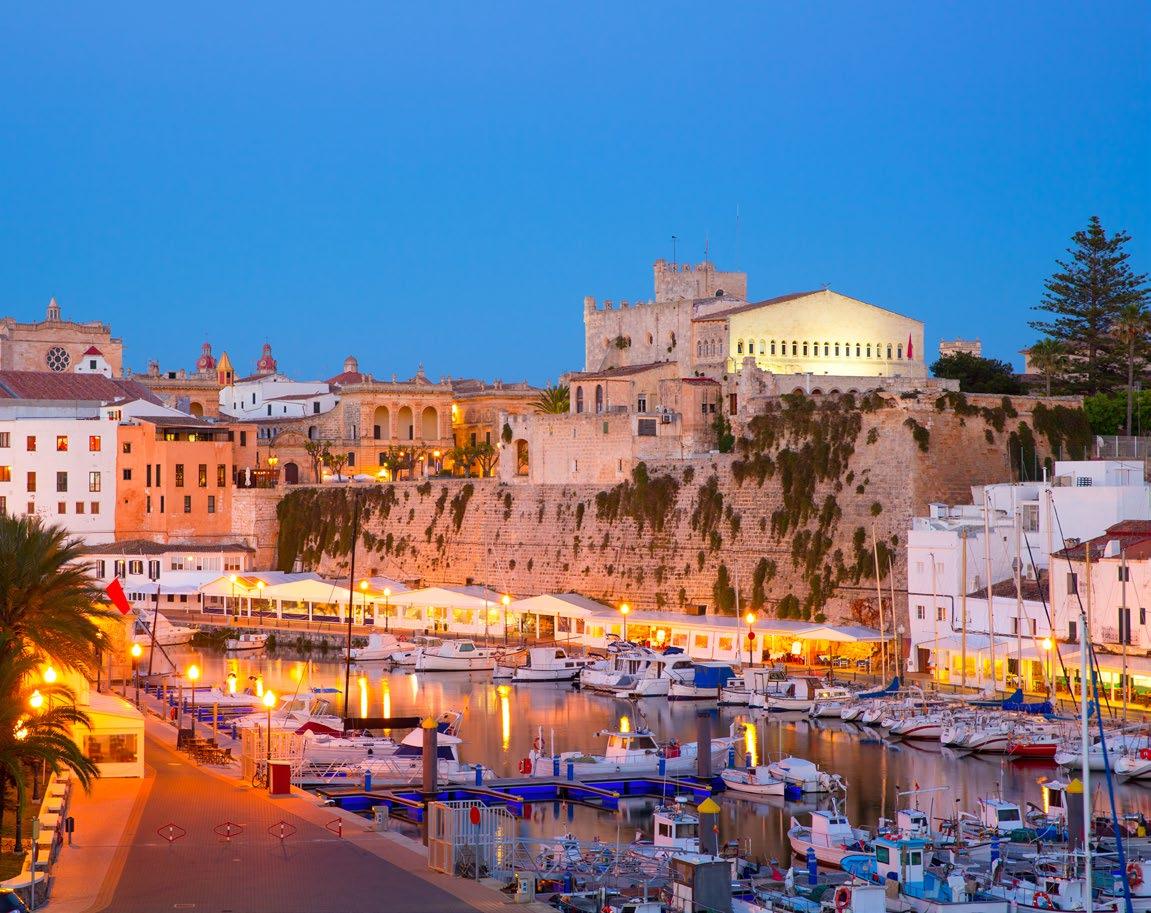
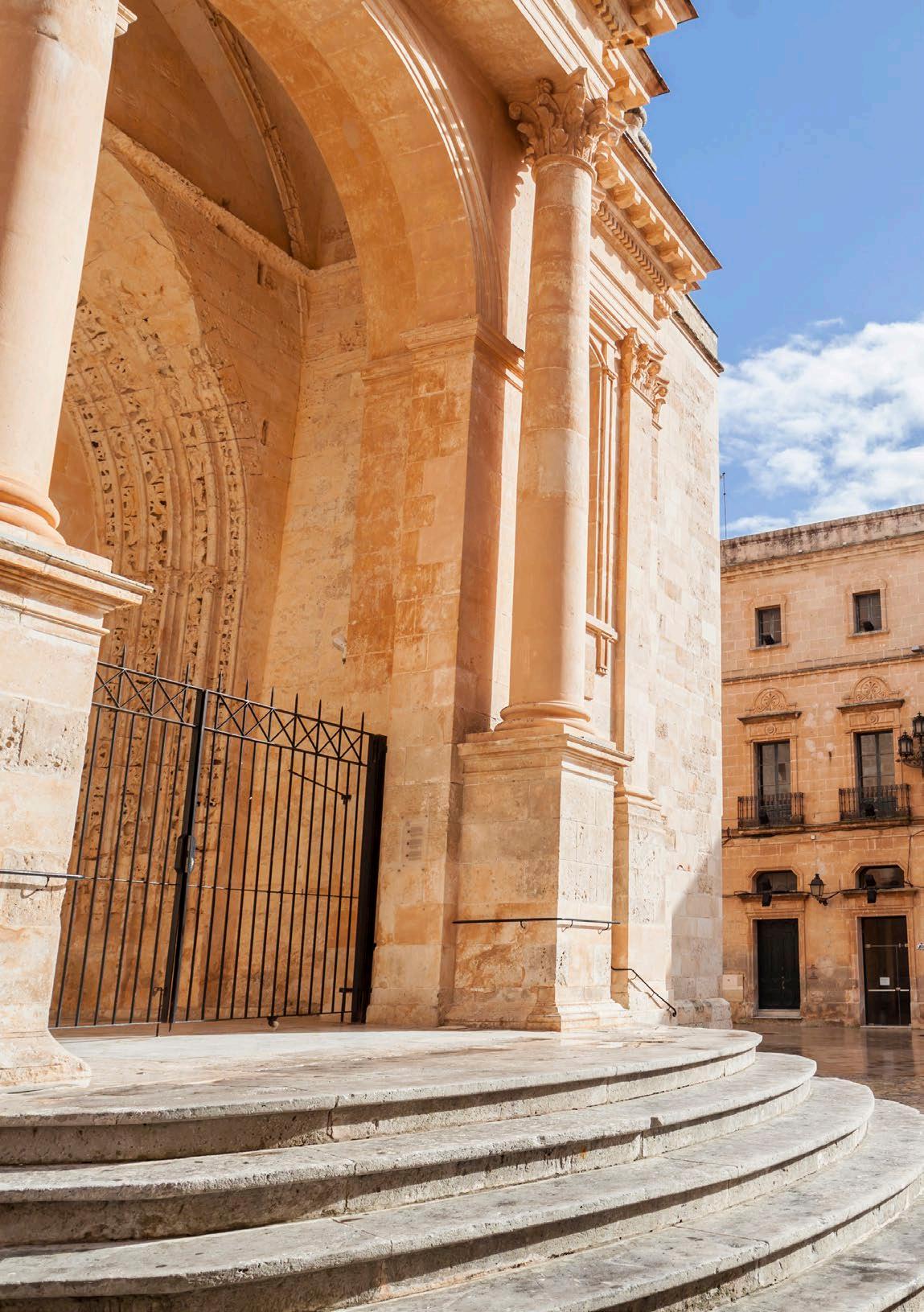
of Sant Joan. You will discover the star role that horses play in all the important events in Menorca.
You should visit the Naveta des Tudons, a collective Bronze Age tomb which is one of the oldest buildings in Europe. In the east of the island, there's further evidence of pre-historic times in the Trepucó Talaiotic settlement, which has one of Europe's oldest and bestpreserved “taulas” (T-shaped Talaiotic construction exclusive to the island of Menorca). To go even further back in time, there's the amazing Torre d'en Galmés, a Pre-Talaiotic settlement with circular dwellings and the remains of a water collection system.
Mahón, the island's capital, lies at the eastern end of the island and is one of the largest natural harbours in the
world. You should visit the majestic La Mola, a typical polygonal German-style fortress; the Menorca Museum which exhibits finds from the archaeological digs; and the Church of Santa María, robust from the outside and neoGothic inside Then there's the splendid Portal de Sant Roc, the remains of the medieval walls that surrounded the city. At the beginning of September, you can experience the popular festivities of Mare de Déu de Gràcia, with samples of gastronomy, parades, and the coming and going of decorated horses and riders through the city streets.
Discover an icon of Menorca's agricultural culture: the llocs, white country estates surrounded by green grass meadows where you can learn how Mahon cheese is made and also sample it.
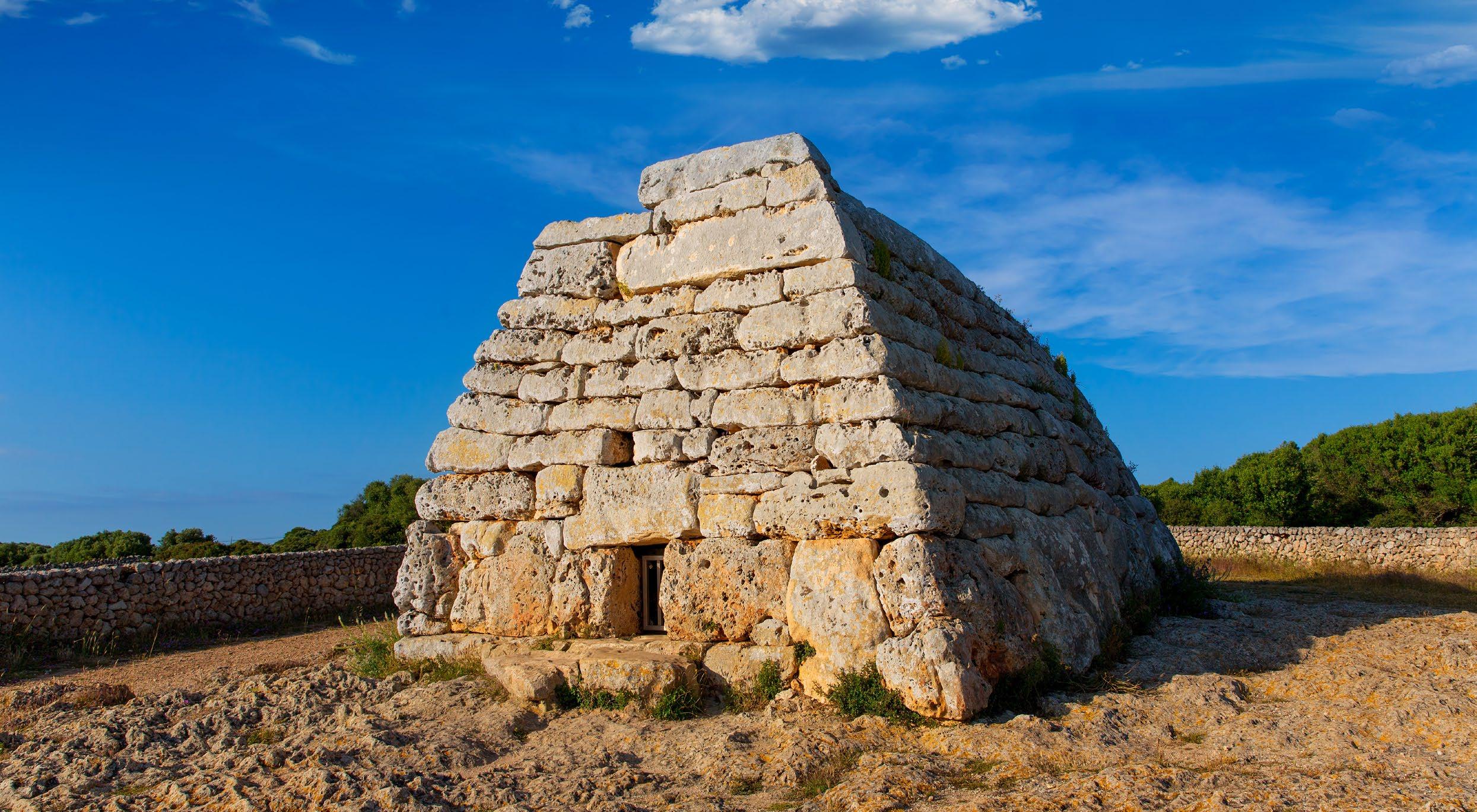

SHOPPING IN MENORCA
One of the most enjoyable activities on the island is to visit open-air fairs and markets in search of handicrafts, such as Menorcan sandals, and typical foods, such as the famous Mahón cheese. You can take home a souvenir of your holiday while supporting local production. During the summer, there are some very special events like the creative craft market in Es Castell, a pretty little fishing village near the entrance to the port of Mahón.
In the Ciutadella craft market, also open in the summer and one of the most popular, you'll find everything: from jewellery and footwear to pottery and illustrations.
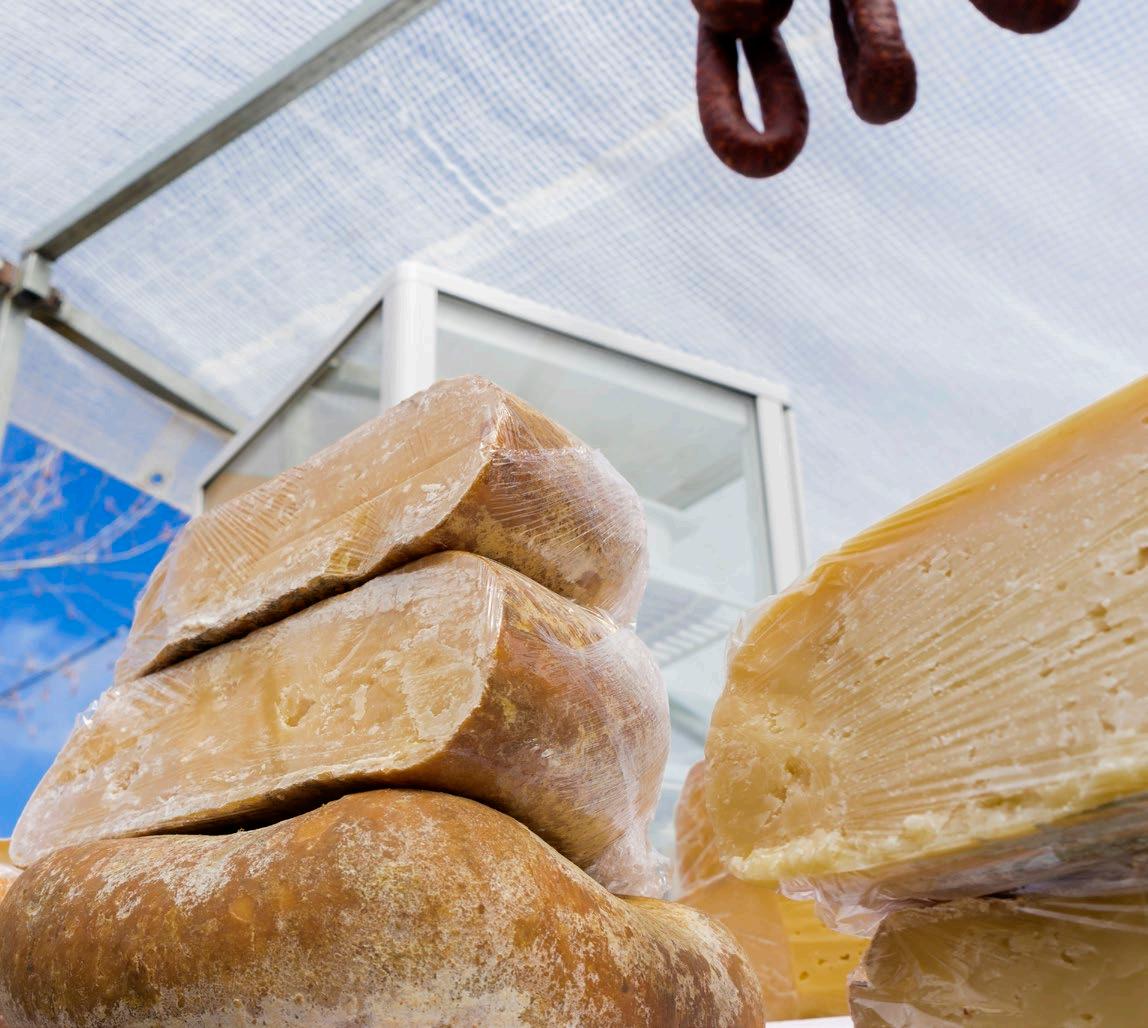
TASTING MENORCA
The island's cuisine takes advantage of both the land and the sea. Delicious Menorcan stuffed aubergines are just one part of the selection of tasty vegetables featuring courgettes, peppers and artichokes. You really have to try “caldereta de langosta” (lobster casserole), one of the island's most iconic dishes, invented by the fishermen.
Then there's Mahón cheese, a local culinary benchmark. It is protected by its own Designation of Origin. It can be enjoyed on its own, or in pies, stuffed potatoes and salads.
Did you know...? Many studies reveal that mayonnaise, one of the most popular sauces in the world, may well have its origins in the island.
Legend has it that it was created in Mahón (where it gets its name) and that a local hotelier served it to Marshall Richelieu who commanded the troops that seized the port of Mahón. Enjoy your meals with a good wine from the island and taste the unique Menorcan gin, made from grapes and aromatic Mediterranean herbs.
The snacks made of fine flour doughs with a combination of sweet and savoury fillings are delicious and come in a great variety. The crespells, the formatjades (traditional Menorcan cheese pastry) and the rubiols are some of the must-tries.
At breakfast and tea time there will be so much to choose from: carquinyols, (pastries made from almonds); crespells (pastries made from flower, lard, olive oil, egg yolk, sugar and lemon): coca bamba (typical Mallorcan ensaimadas) and more.
NATURE
Apart from the extraordinary archaeological and cultural heritage, Menorca also offers a wealth of ecological and landscape features.
You can explore the island's different habitats on foot, by bicycle or on horseback. Or you could dive into its waters and discover the amazing natural treasures on the seabed.
Take a tour to the s'Albufera des Grau Nature Reserve, the green jewel of the archipelago. There are three routes for you to explore. You'll see megalithic buildings, unspoiled beaches and cliffs, lagoons, farmland... And the wealth of fauna includes endemic species like the osprey and the Balearic lizard.
At night, sign up for some stargazing activity, as Menorca is a Starlight Tourist Destination.
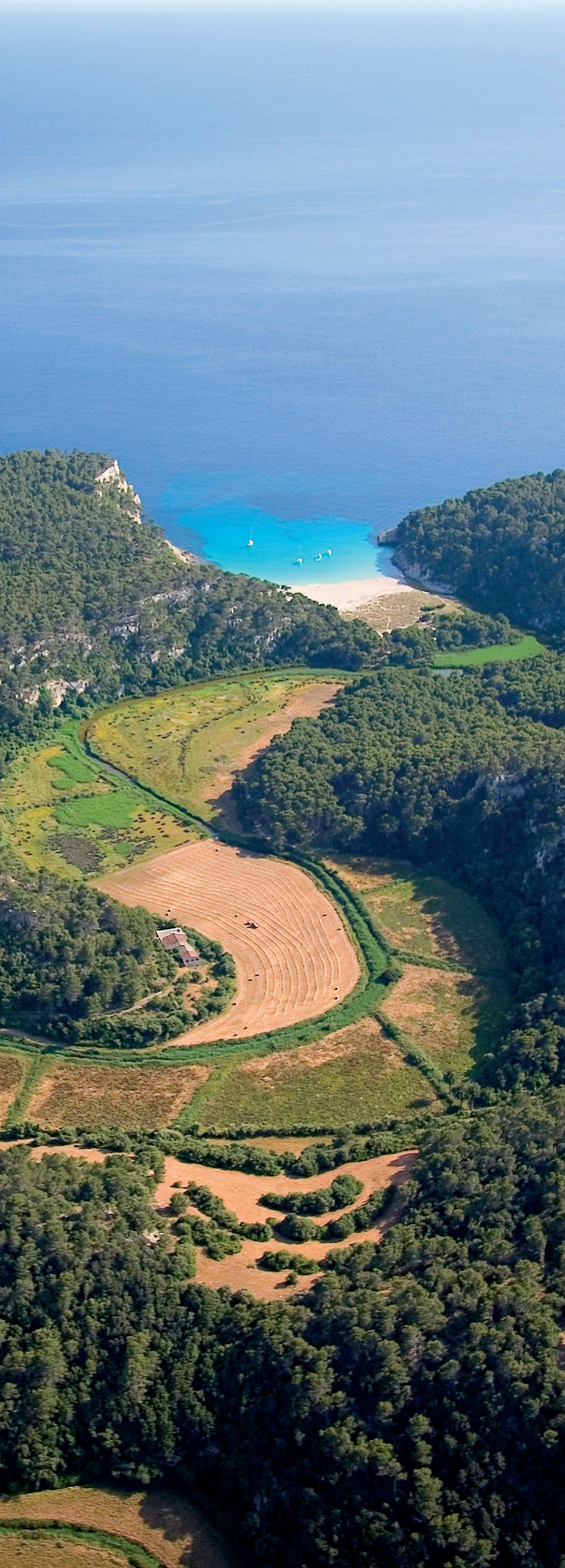
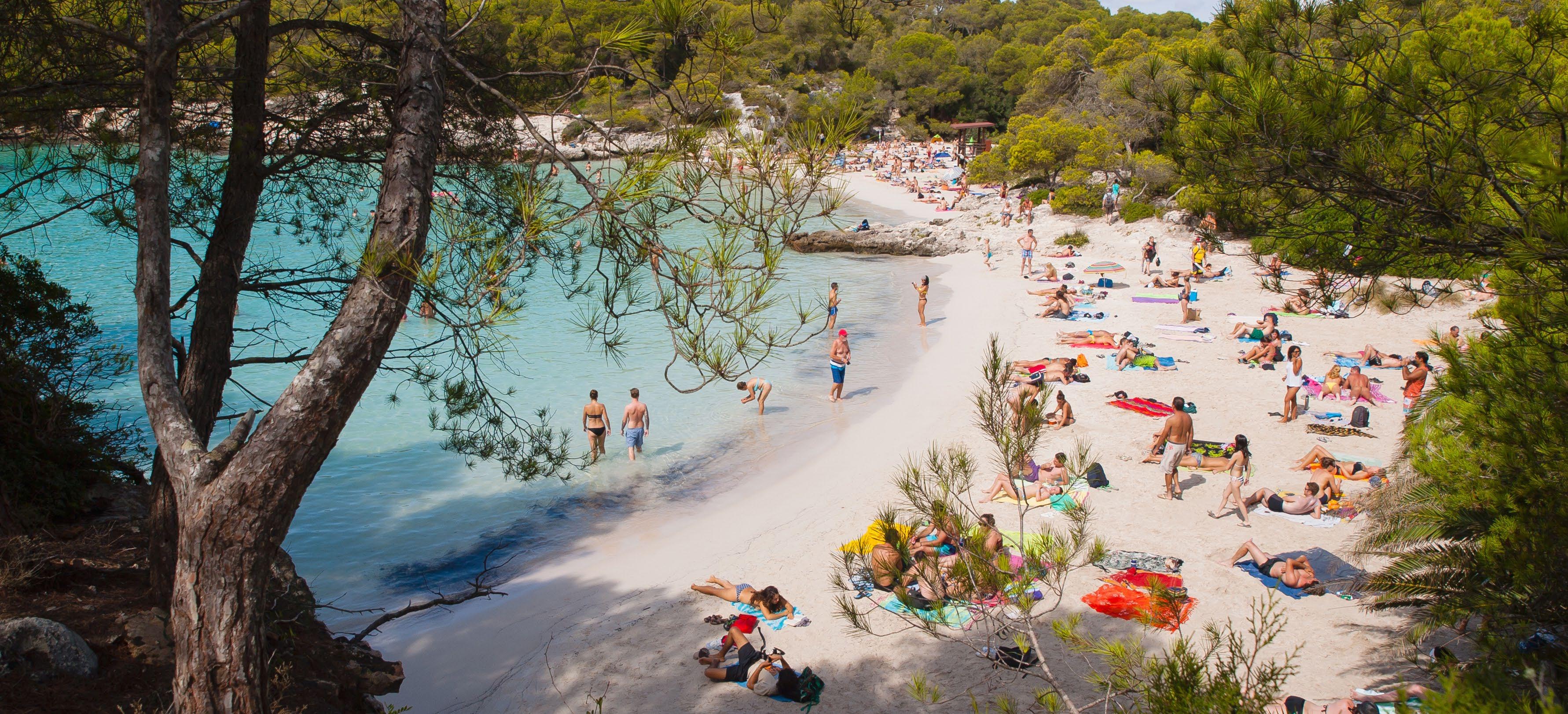
COAST AND BEACHES
The great biodiversity of the Menorcan coastline requires special protection. Ecotourism and walking or cycling trails are the best idea to discover Menorca’s unspoilt beaches and coves hidden among unique natural enclaves.
The Camí de Cavalls, a 185-kilometre hiking and mountain biking route that circles the entire island, is the ideal way to explore the coast and also learn about its culture and history. It is divided into 20 sections and has a practical interactive map that shows you all the attractions along the way.
Fine, white sand and crystal clear waters are what characterise the southern beaches such as Son Bou, Macarella, Cala Turqueta and Cala Blanca and En Forcat, near Ciutadella. If you are going with children, Binibèquer Nou, in the municipality of Sant Lluís, has all the services of an urban beach. In the north, the beaches have reddish sand which contrasts with the blue and green shades of the sea. surrounded by dunes, such as Binimel-là or by cliffs, such as Cala Morell.
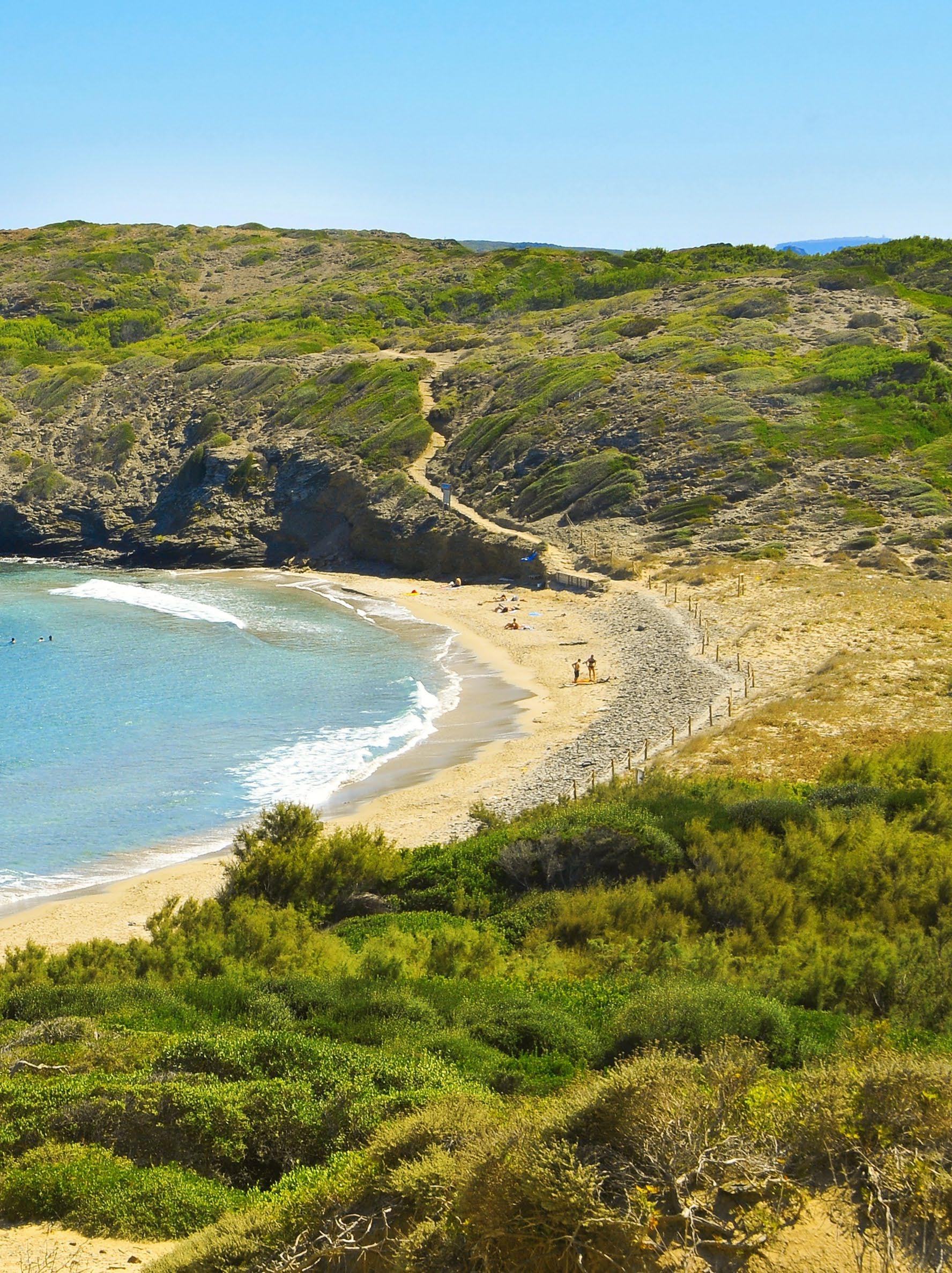
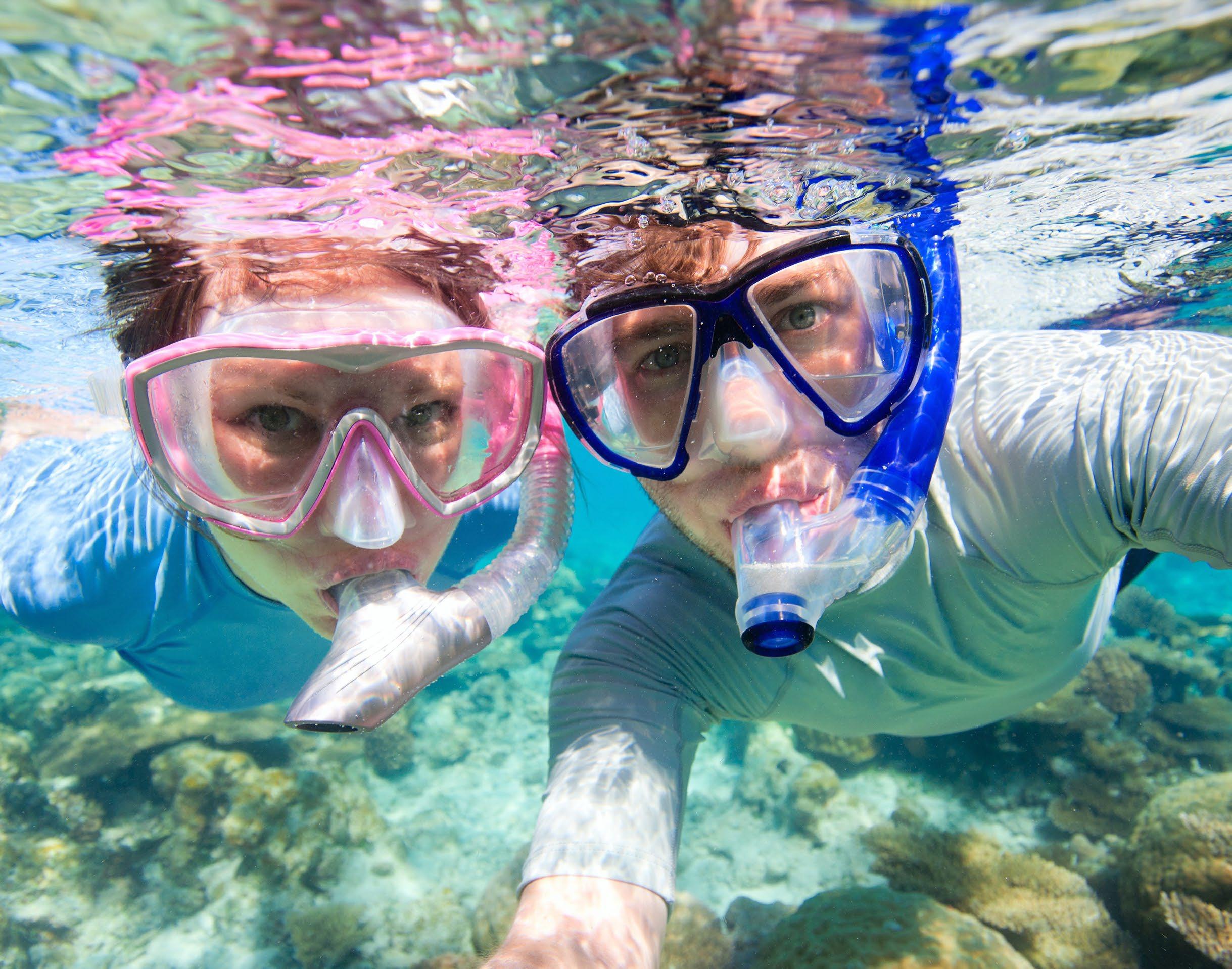
MENORCA WITH CHILDREN
Your children can enjoy unforgettable experiences like horse and pony riding. Or you could take them on a guided boat trip. Set sail from the port of Ciutadella de Menorca and discover the unspoiled coves of the south from the sea. To discover the amazing cliffs and islets of the north coast you should take a boat from Fornells. Or sail in the waters of the port of Mahón.
Snorkelling, kayaking and diving are also suitable for young adventurers. There are plenty of activities to do in the spectacular northern marine reserve
Fun is guaranteed in the water parks of Ciutadella, Sant Lluís and Es Mercadal. You can also visit the Alaior Zoo.
In addition to the cultural routes through Talayotic Menorca, such as the spectacular Naveta des Tudons or visiting one of the island's seven historic lighthouses, S'Albufera des Grau Natural Park is ideal for planning excursions and admiring this fantastic Biosphere Reserve.
L More information: www.menorca.es

IBIZA/EIVISSA
Ibiza (Eivissa in Catalan) is renowned for its long party nights, fine sandy beaches and crystal-clear waters, but it has so much more to offer. Its culture and biodiversity have led it to be recognised by UNESCO. You'll be captivated by its beauty.
CULTURE
The Phoenician and Carthaginian civilisations have left quite a footprint on the island, as has the Renaissance era. From up in the historical old town of Dalt Vila, declared World Heritage, in the capital city of Ibiza you have fantastic panoramic views with the port at your feet. It is completely surrounded by impressive Renaissance city walls which were built to protect the town against pirates. The most monumental of the five access gates is the Portal de ses Taules, next to the Mercado Viejo or Old Market.
It is a real pleasure just to stroll through the maze of squares and narrow streets. The most striking features are the defensive bulwarks, the ayuntamiento or Town Hall (in what used to be a Dominican Convent) and the tiled vaults of the Church of Santo Domingo
All roads lead to the Cathedral of Santa María de las Nieves which was built on the old Moorish walls. It is in Catalan Gothic style with a Baroque nave. It also houses the Diocesan Museum, which exhibits a splendid collection of
wonderful silver-gilt articles. On top of the Puig de Vila hill stands the Almudaina Castle, the tallest monument in the city with a medieval keep.
It is well worth spending some time in the city's museums. The Archaeological Museum of Ibiza and Formentera holds a unique collection of valuable ceramics, jewels and sarcophagi that span 3,000 years of history. If you like modern art then you should visit Ibiza's Museum of Contemporary Art (MACE) or you could discover the evolutionary history of the city from the great audiovisual model at the Madina Yabisa Visitor Centre
Not to be missed is the Monographic Museum and Punic Necropolis in Puig des Molins. Some 3,500 tombs have been discovered in this PhoenicianPunic cemetery, one of the largest and best preserved in the world. The funerary items found in the tombs are exhibited in the museum: necklaces, charms, coins...
The next most significant archaeological sites on the island are those of Ses Païsses, Cala d'Hort and the Phoenician dwelling in Sa Caleta
The beginning of September is great for music lovers, with live music in the heart of the walled city: the Eivissa Jazz festival is open to both local and international artists.
Join creative tourism and take part in exciting activities such as music, dance, photography, language and culinary workshops. And to go deeper into the traditional architecture of the island, follow the White Churches route, which are located in beautiful rural landscapes.
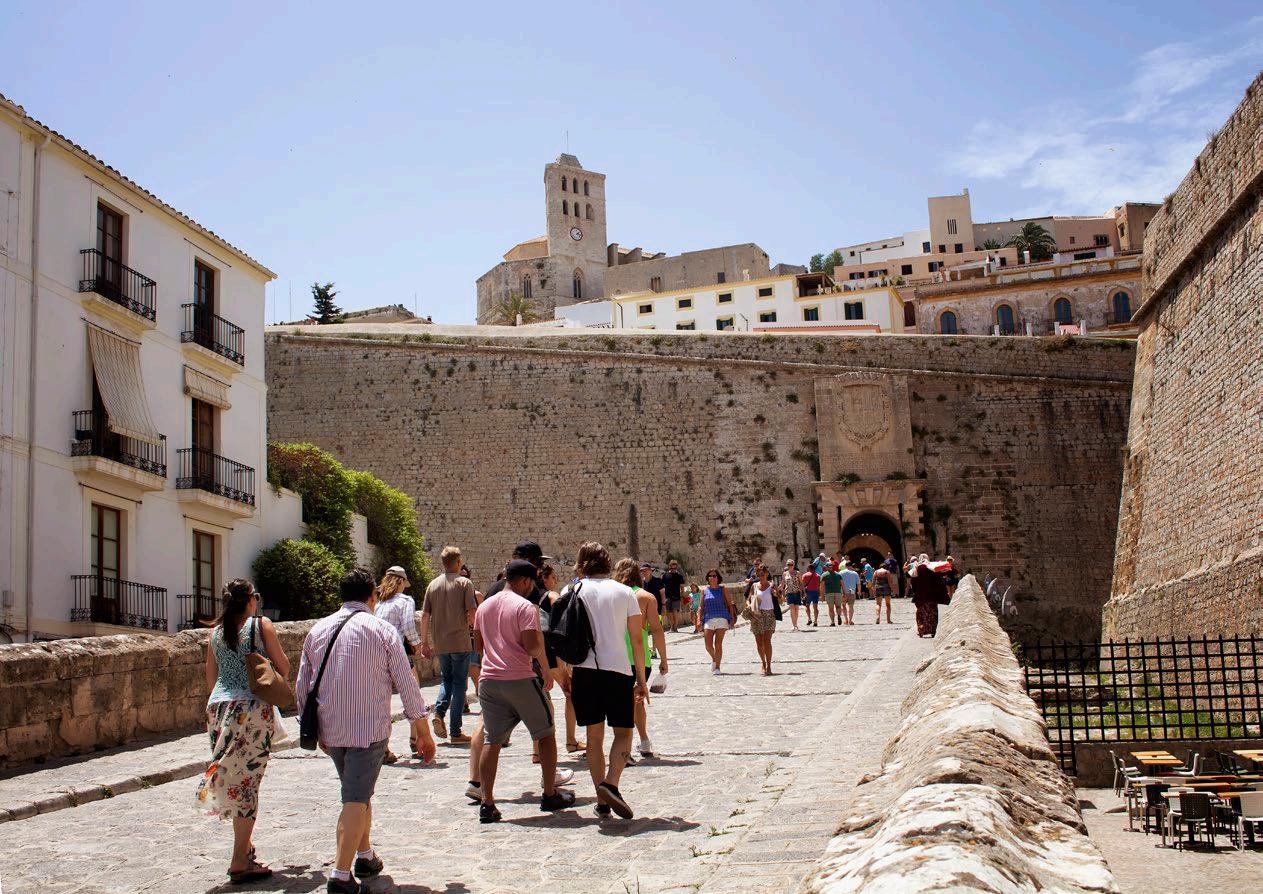
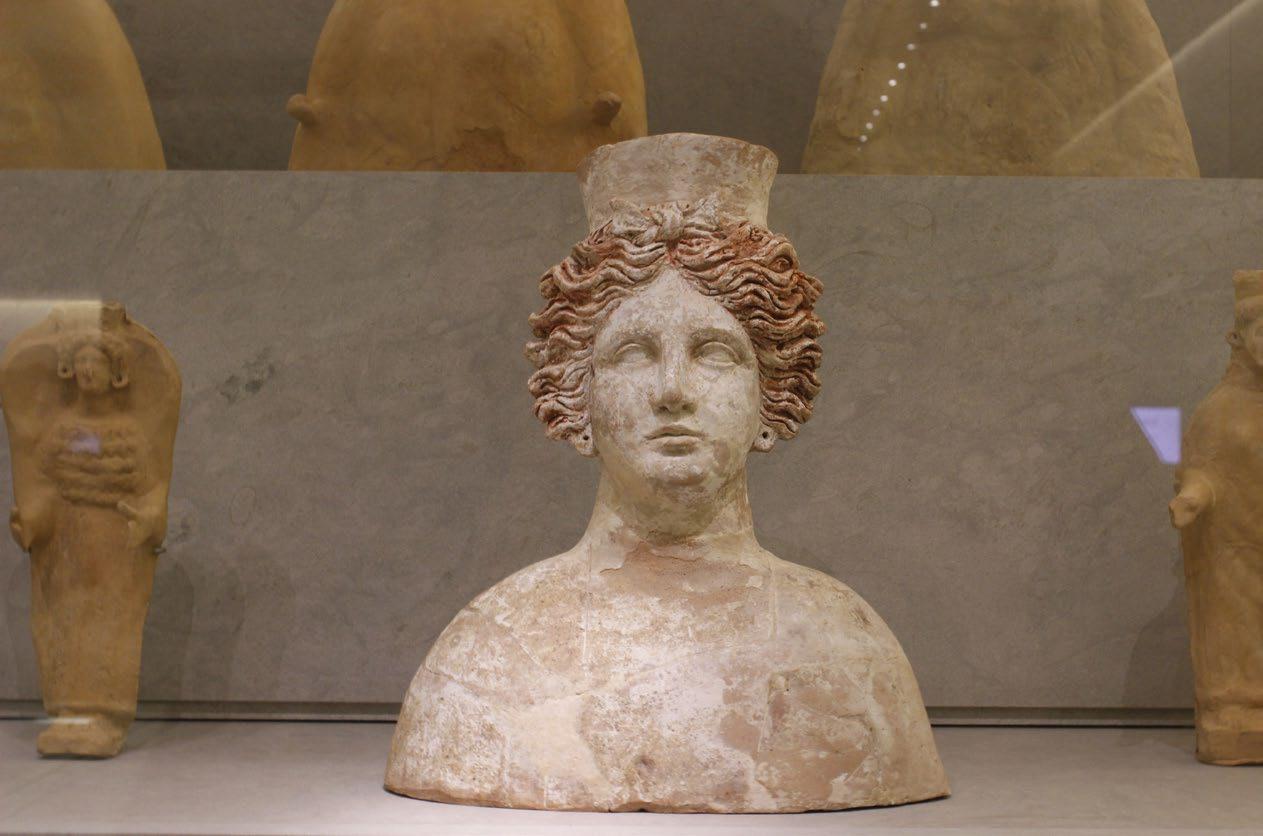
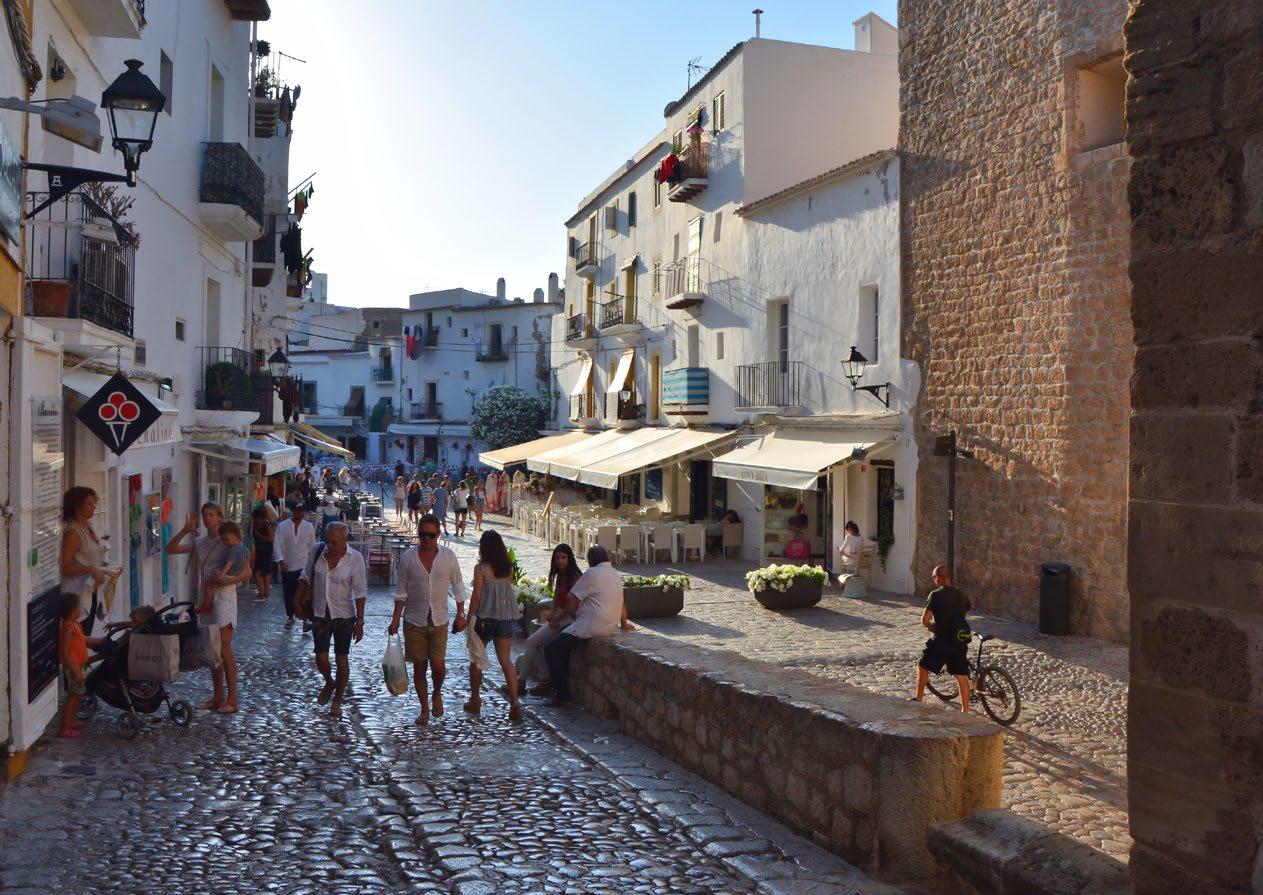
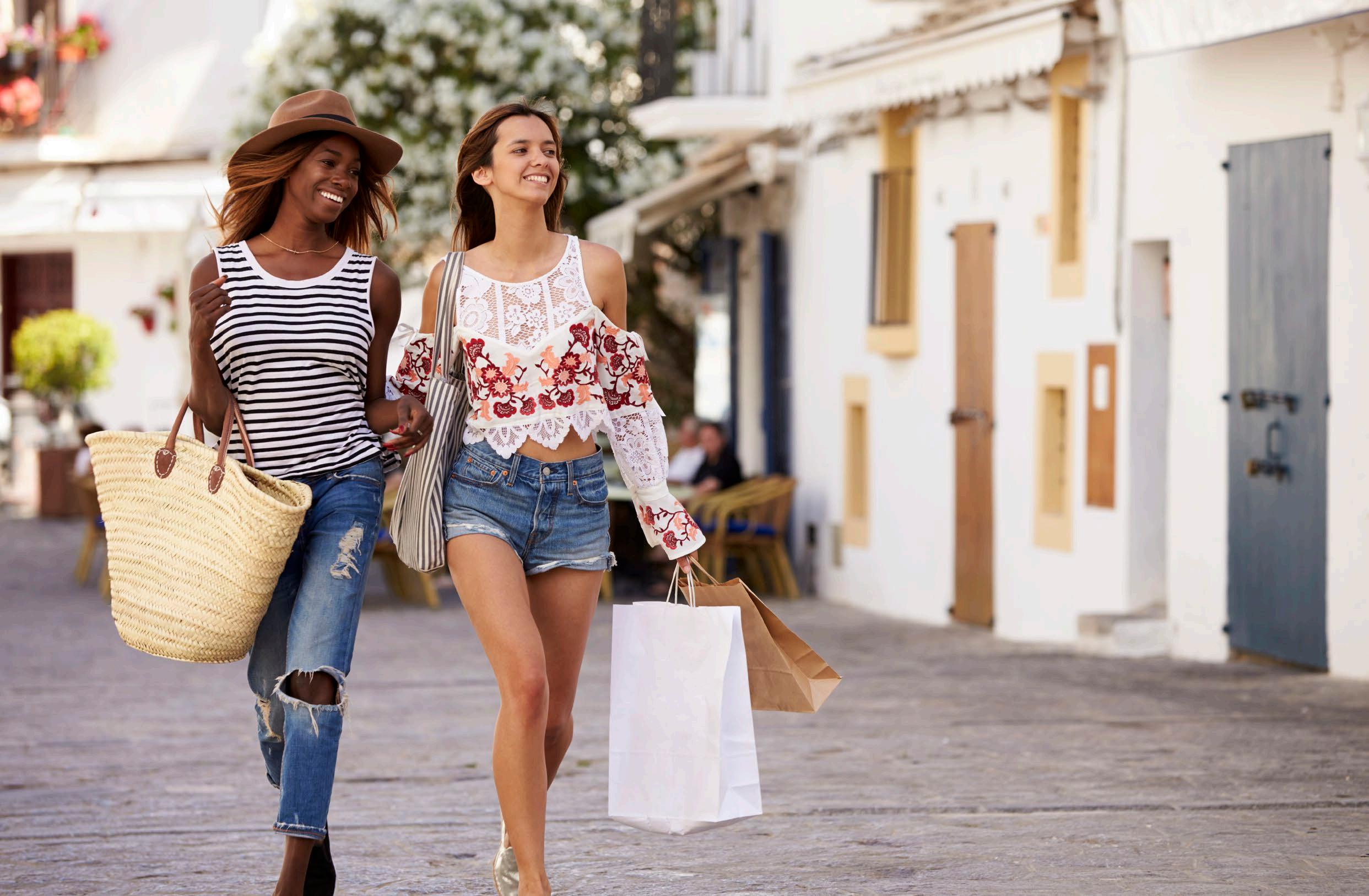
SHOPPING IN IBIZA
When you're in the city of Ibiza, you can always do a little shopping in the port. Meander through the alleys of the La Marina neighbourhood and discover the variety of leather and jewellery craftwork, Ibizan espadrilles or espardenyes, or the adlib fashion of traditional embroidery and lace. If you prefer somewhere a bit more modern and spacious, then you should try the newer part of the city called the zona del ensanche and the area around the “Mercado Nuevo” or New Market
where you'll find magnificent, fresh, local produce.
Then there are the colourful, bustling, open-air street markets with a seventies feel. One of the oldest is the Port of Ibiza street market, a haven of costume jewellery and craft work. The Las Dalias Hippy Market in Sant Carles is also iconic: Take a look at their stalls while sipping a cocktail and listening to live music. Or you could meet the craft workers in the popular Paseo de S'Alamera Hippy Market in Santa Eulària.
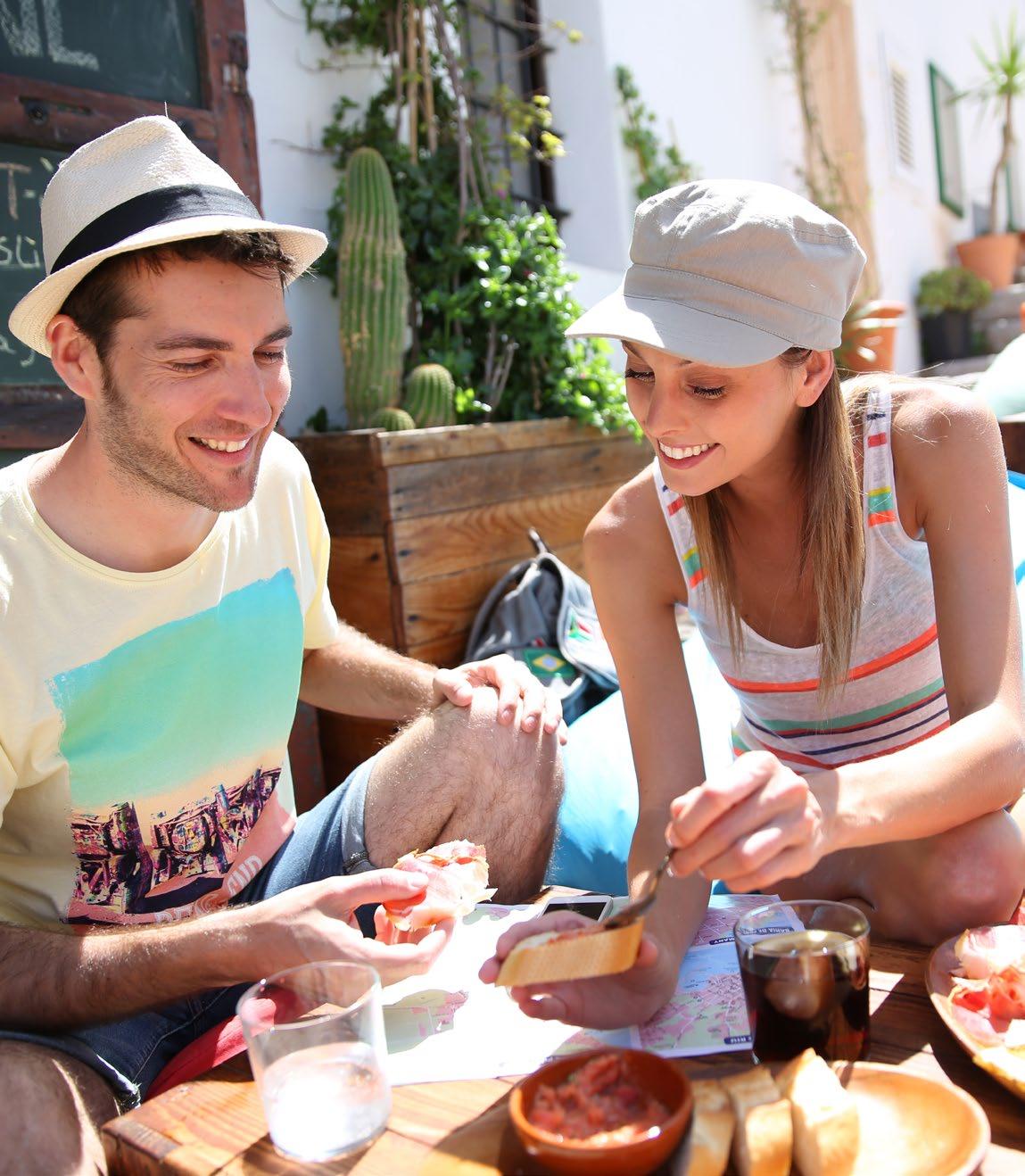
TASTING IBIZA
Healthy and so very tasty: that is how you would describe the island's cuisine. We recommend traditional dishes made from seafood and fresh, local produce. One of the most representative is the “bullit de peix” or fish stew. Stew made with vegetables, potatoes and rock fish, accompanied by the Mediterranean alioli sauce (olive oil and garlic) and rice “a banda” made with the fish broth. For something sweet, try “orelletes”, traditional, fried aniseed-flavoured cakes, which you'll find in any pastry shop.
One of the liveliest areas for dining is on a terrace in the port. You can find quiet and pleasant places in some of the inland villages.
NATURE
From the beach you get a wonderful view of the islands of Es Vedrà and Es Vedranell in the Cala d'Hort, Cap Llentrisca y Sa Talaia Nature Reserve. This is the perfect place for diving, hiking and mountain-biking.
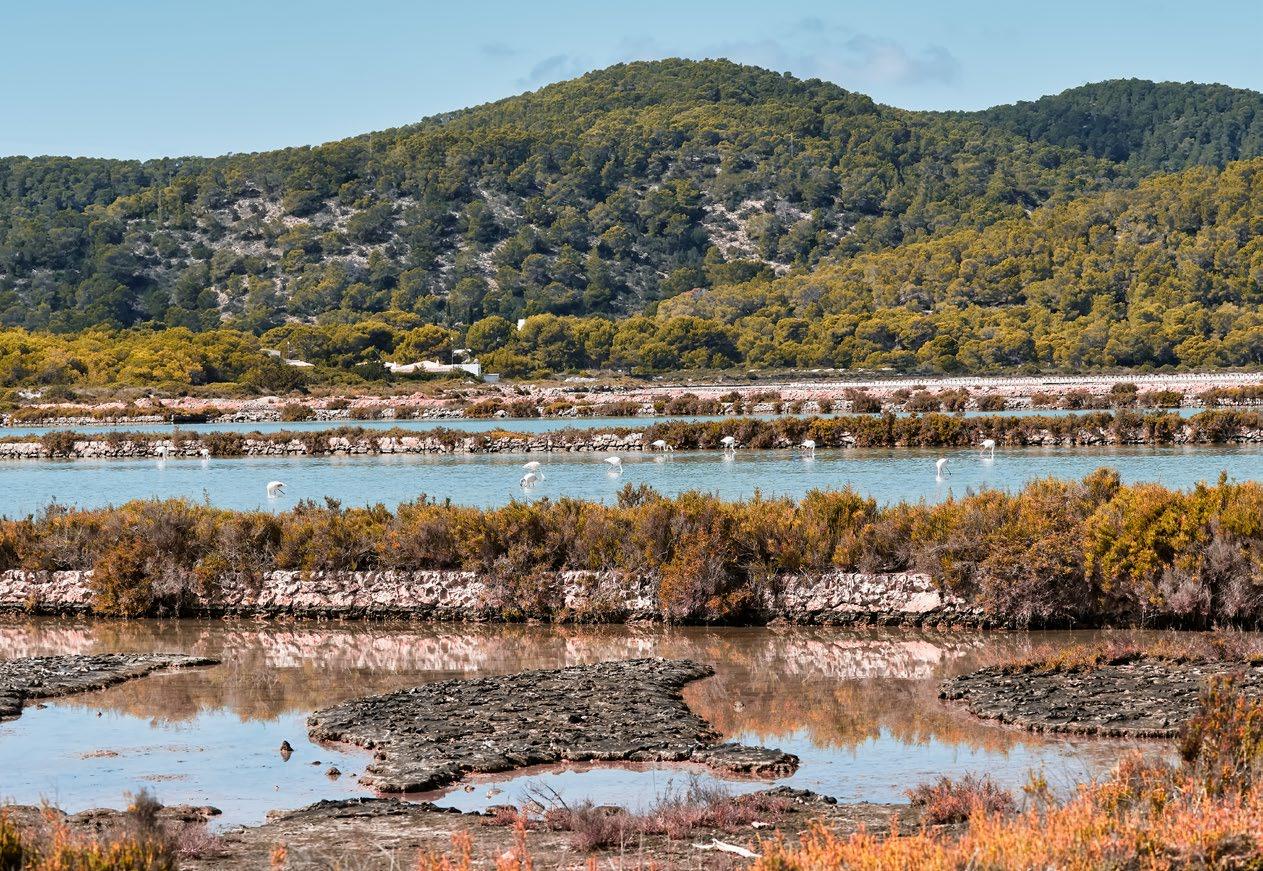
You can look out over a myriad of landscapes in the Ses Salines Nature Reserve which goes from the south of Ibiza to the north of Formentera and includes the strait which separates the two islands. Underwater, seagrass beds of Posidonia oceanica grow, which have been declared a World Heritage Site by UNESCO for serving as a refuge and food for numerous species and for promoting oxygenation and transparency of the waters. On a stroll along the coast you will see the amazingly colourful salt pans, the dunes covered with ancient juniper trees and some extraordinary cliffs.
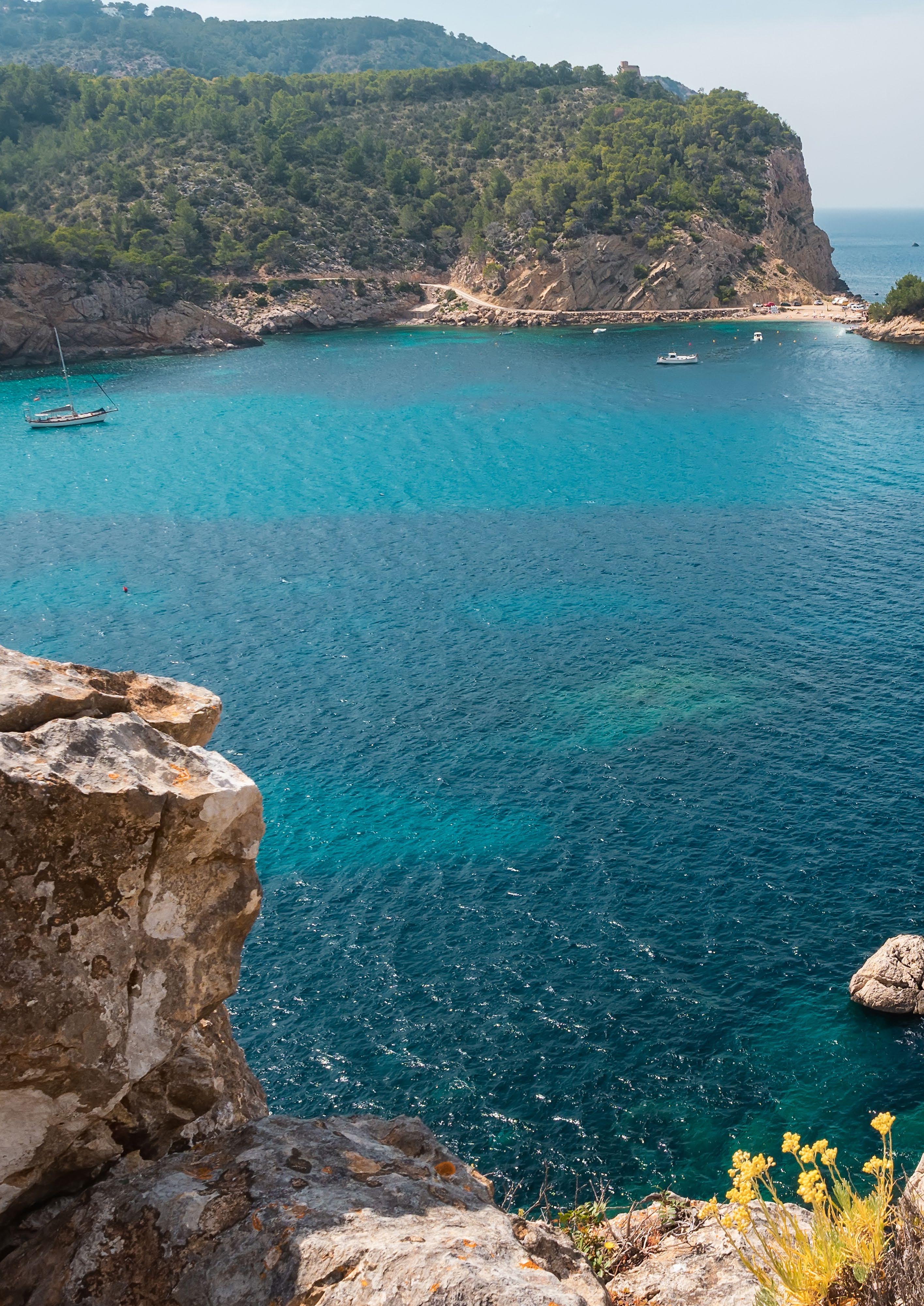
In the north of the island, in the sheer cliffs of the Port de San Miquel, you can visit the Can Marçà caves, which date back over 100,000 years. You can take a guided tour and see an amazing collection of stalactites and stalagmites.
COAST AND BEACHES
The beaches and coves of the Ibizan coastline form a natural heritage where sustainability is vital. Enjoy hiking with stunning views and unique ecosystems, along with small coves surrounded by cliffs and vegetation, such as Cala d'Hort and Cala Xarraca, and the flamingos and migratory birds that live in Ses Salines.
The city of Ibiza has two beaches in town which provide comprehensive services including sun loungers and parasols for hire, lifeguards and showers: Ses Figueretes and Talamanca. They can be reached on foot, by bicycle and public transport and they are accessible for those with reduced mobility. The spacious Playa d'en Bossa, between the municipalities of Ibiza and San José, shares the same conveniences.
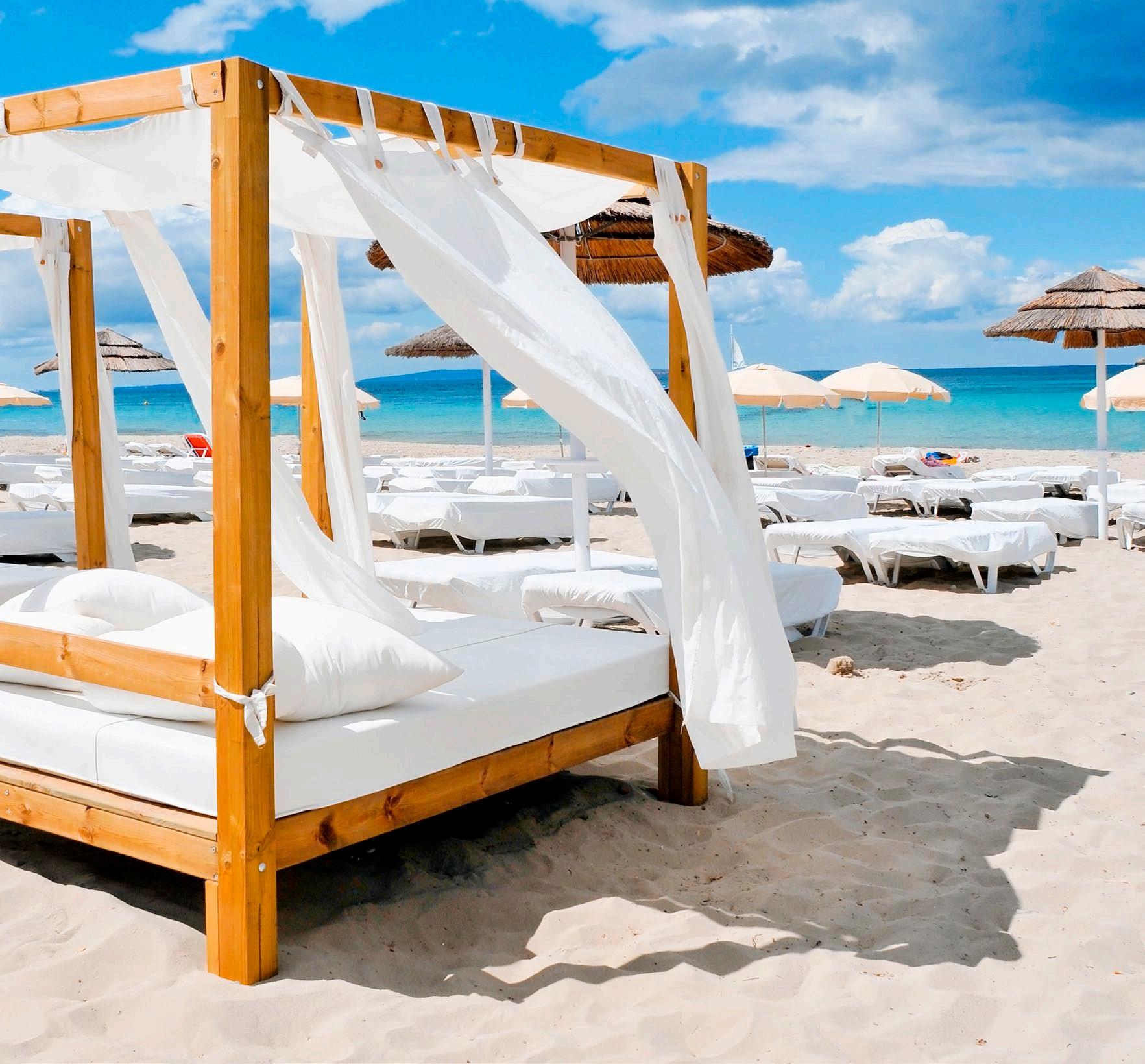
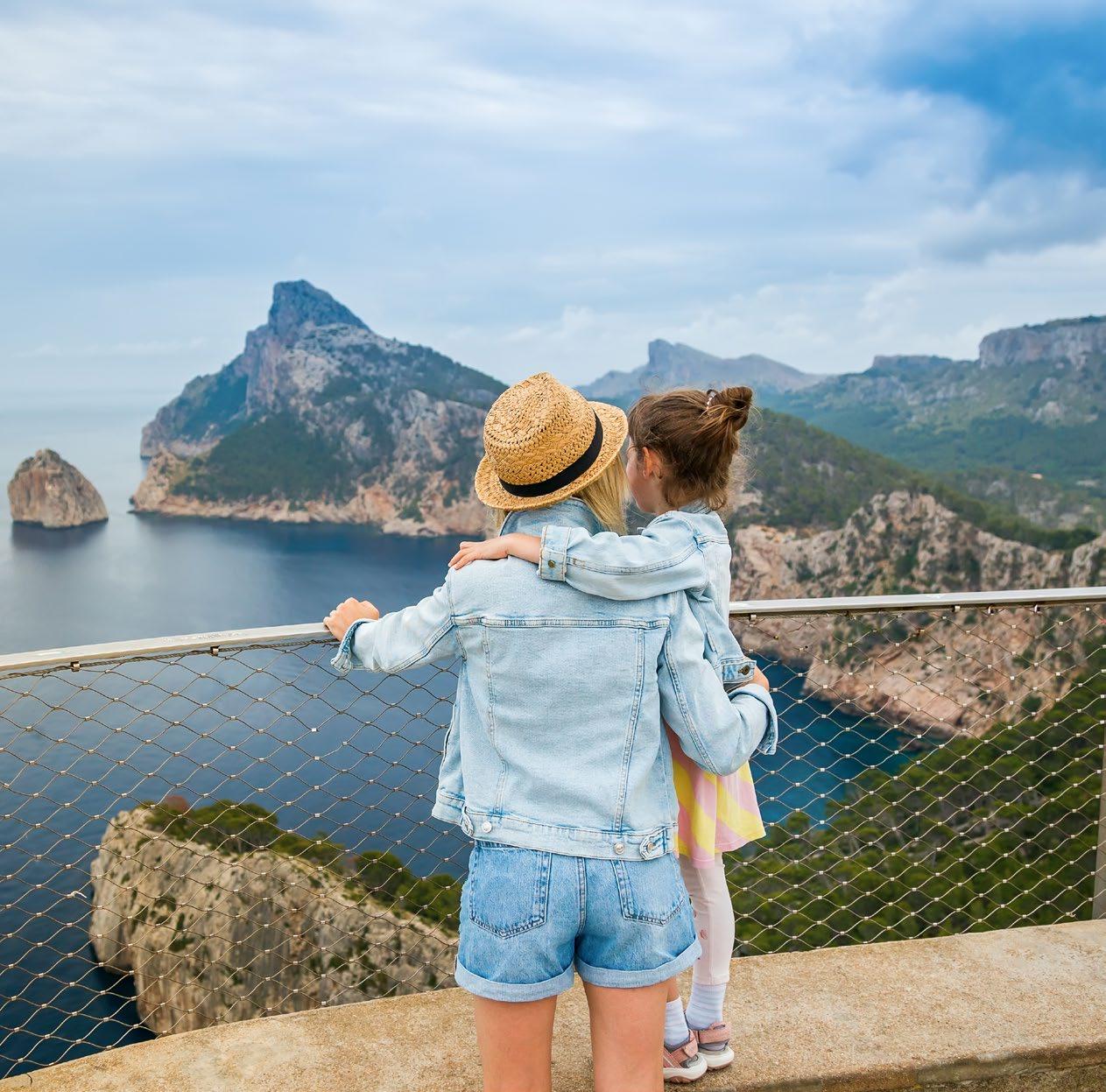
IBIZA WITH CHILDREN
Apart from playing in the sand and the gentle waves of the sea, there are a number of activities for children to have a great time: balloon rides, dramatised routes within the walled city, shows for children... Bike rides are a great idea. There are several well-organised routes to choose from: amongst pine trees, salt pans and flamingos in the Ses Salines Nature Reserve. You could also visit the Cap Blanc Aquarium in Sant Antoni de Portmany, where you'll see typical marine species from the surrounding area, or you could take one of mini tourist trains which leave from the port and a number of different beaches and neighbourhoods.
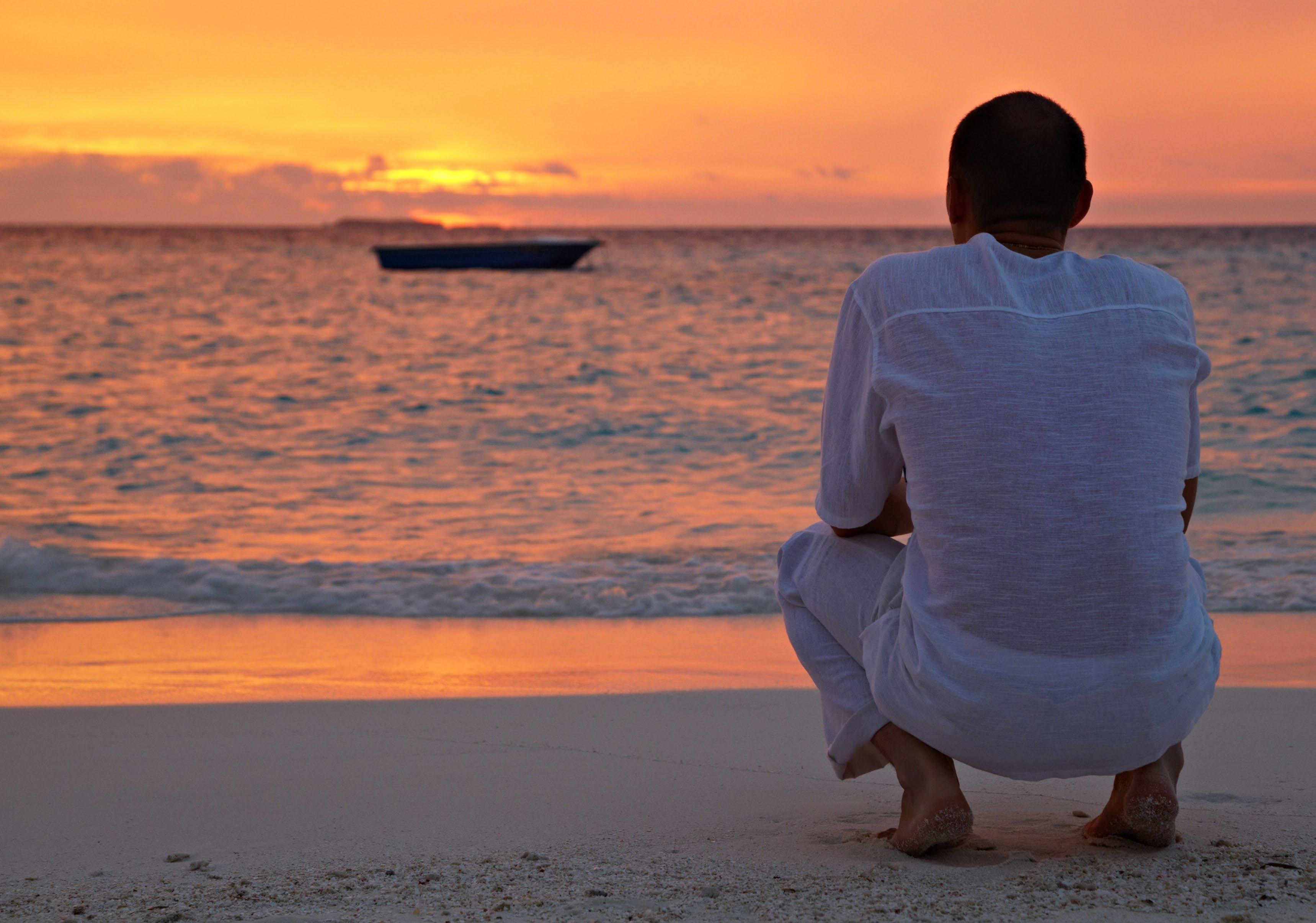
EXPERIENCE THE NIGHTLIFE
Before nightfall, you can enjoy a magic sunset with soundtrack included. Sip a cocktail while you watch the sun set on one of the chill-out terraces in the coves around Sant Antoni de Portmany on the west coast. In the Playa d'en Bossa area you'll also find a large number of beach bars, pubs and clubs.
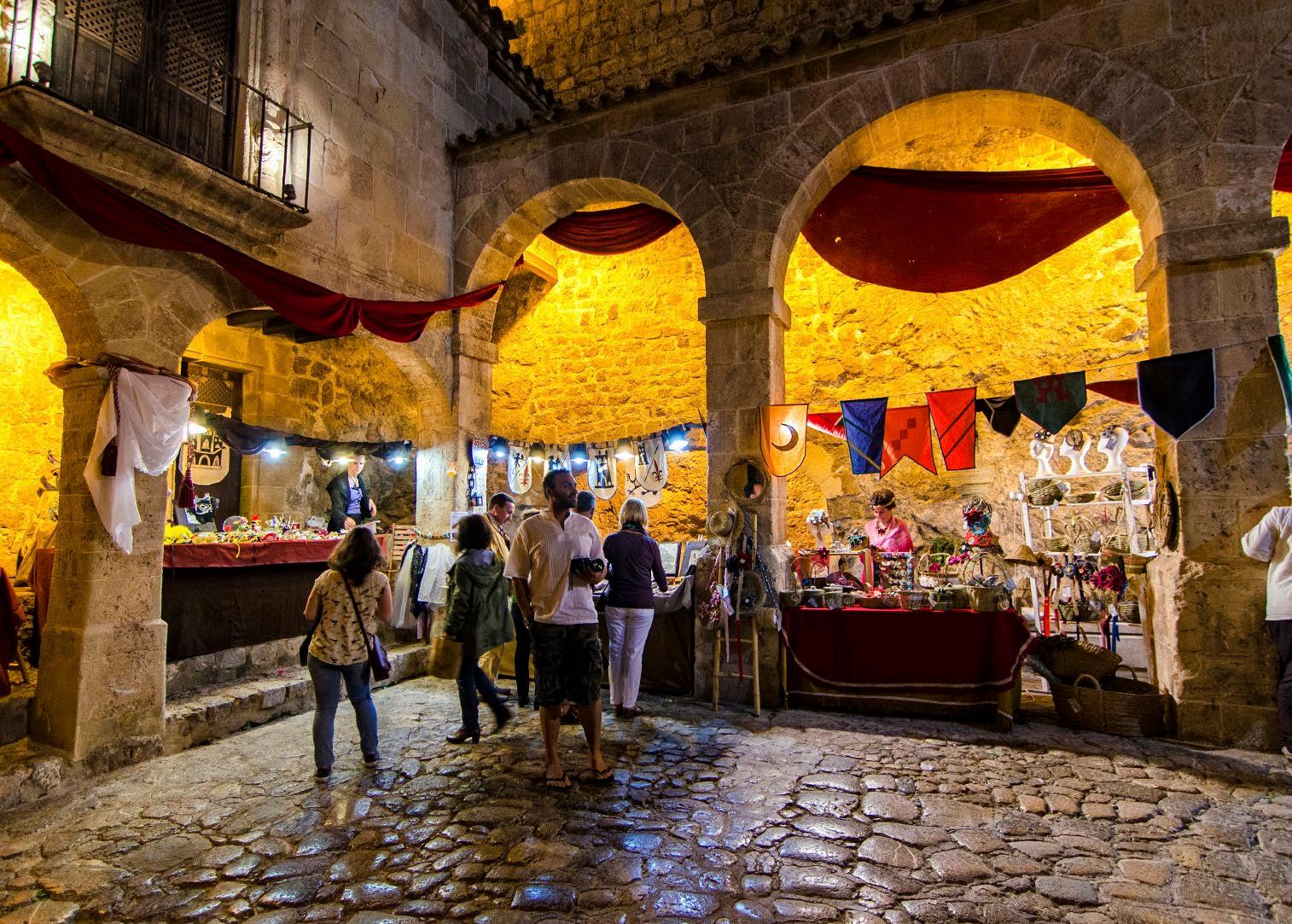
If you're in the city of Ibiza, the place to go is the La Marina neighbourhood. There is an incredible festive atmosphere in the area around the port where you can have dinner, try some hand-made ice cream and stroll around the street market while you wait for the extravagant “parades” promoting fiestas and live performances in the clubs.
Enjoy the latest music played by the very best DJs and dance until dawn in some of the greatest clubs in the world. Everybody comes under the magic spell of the night in Ibiza.
L Further information: www.ibiza.travel
